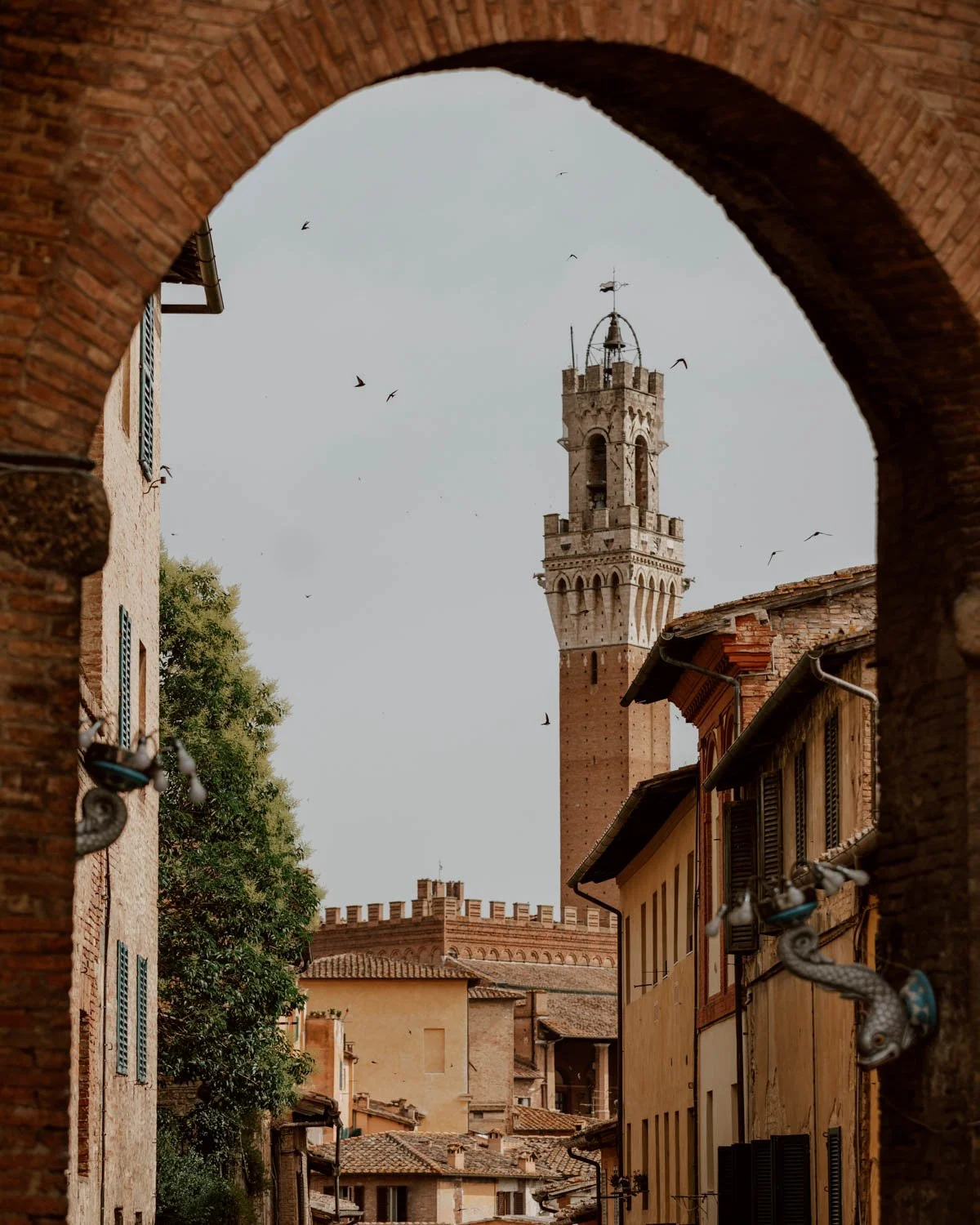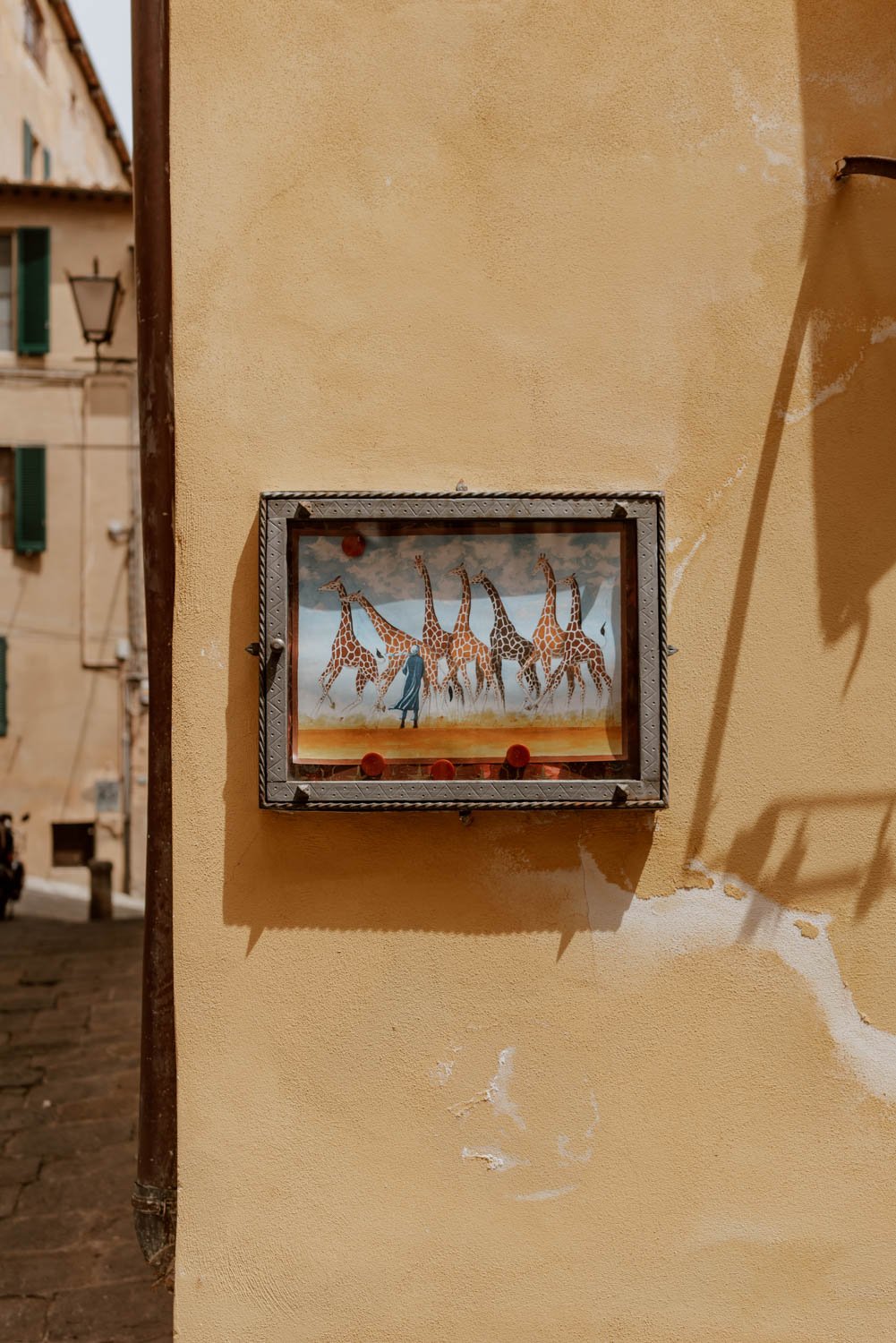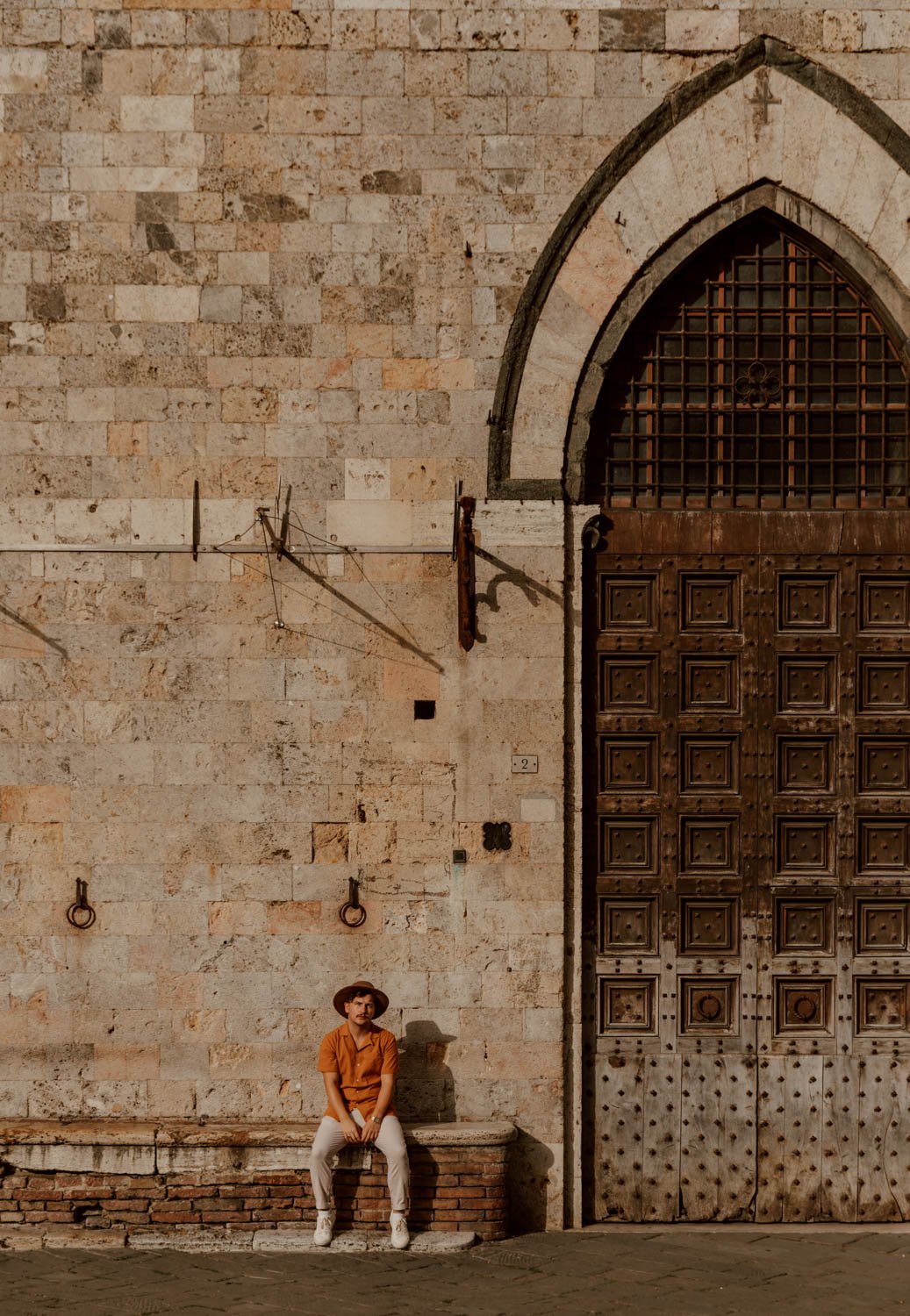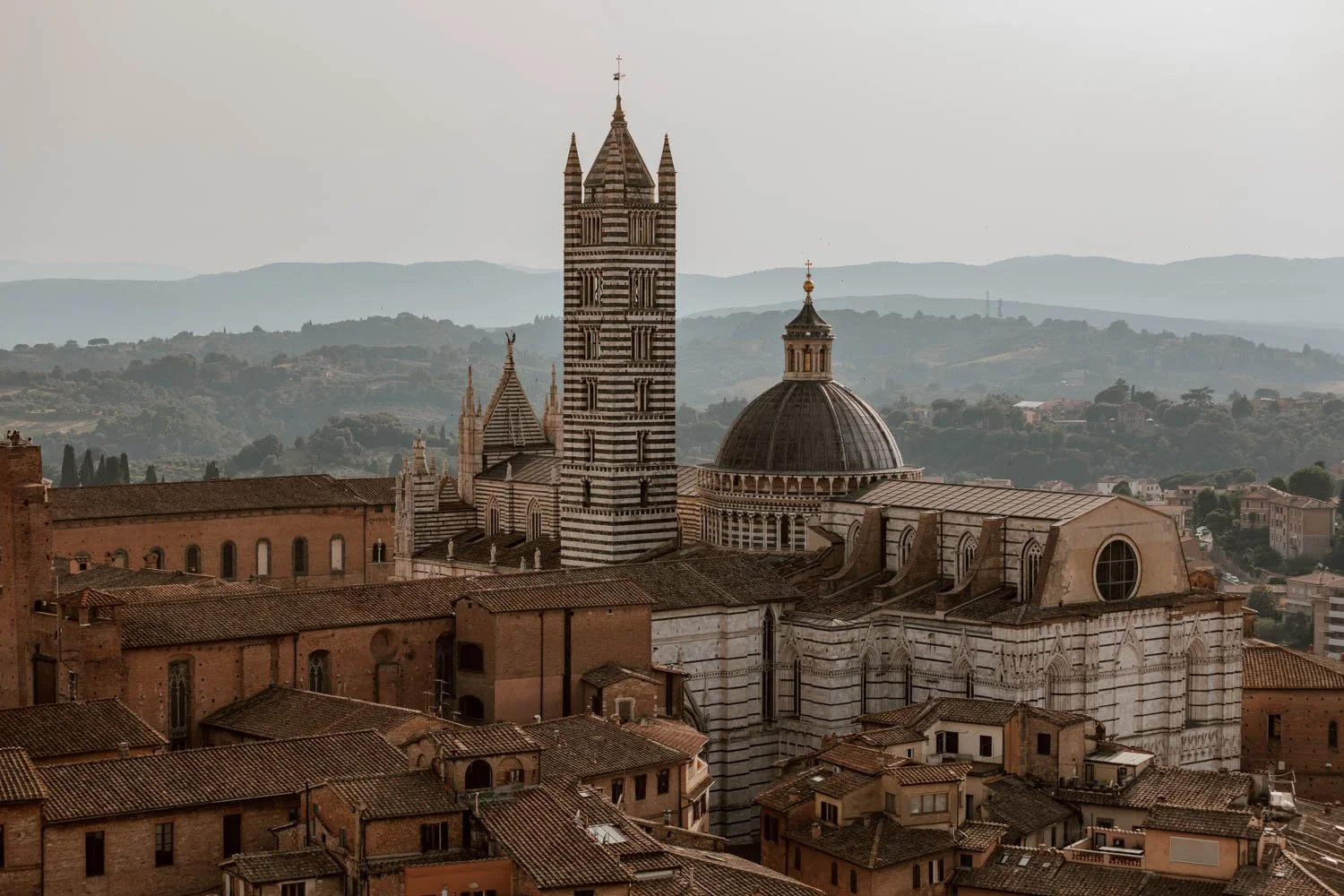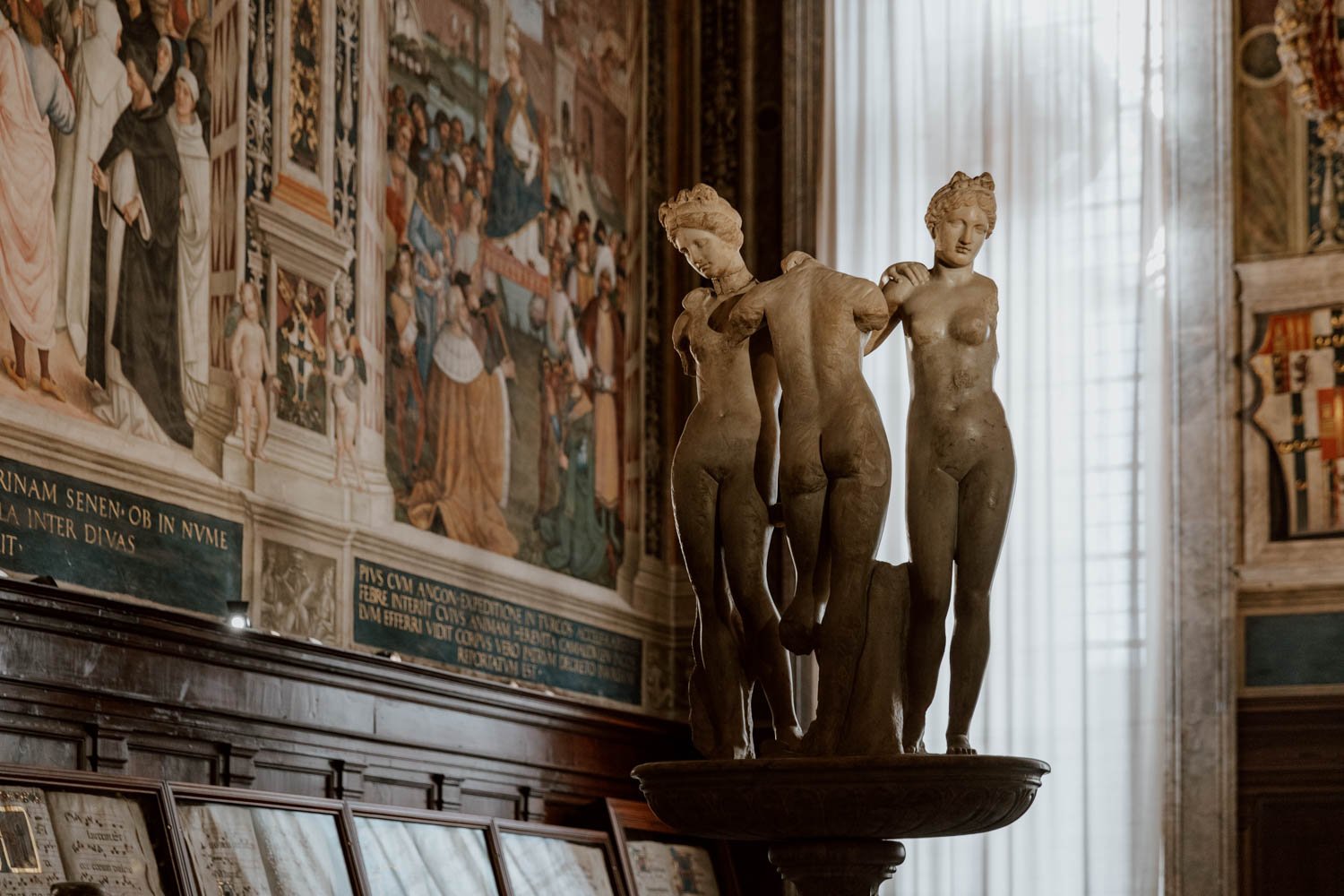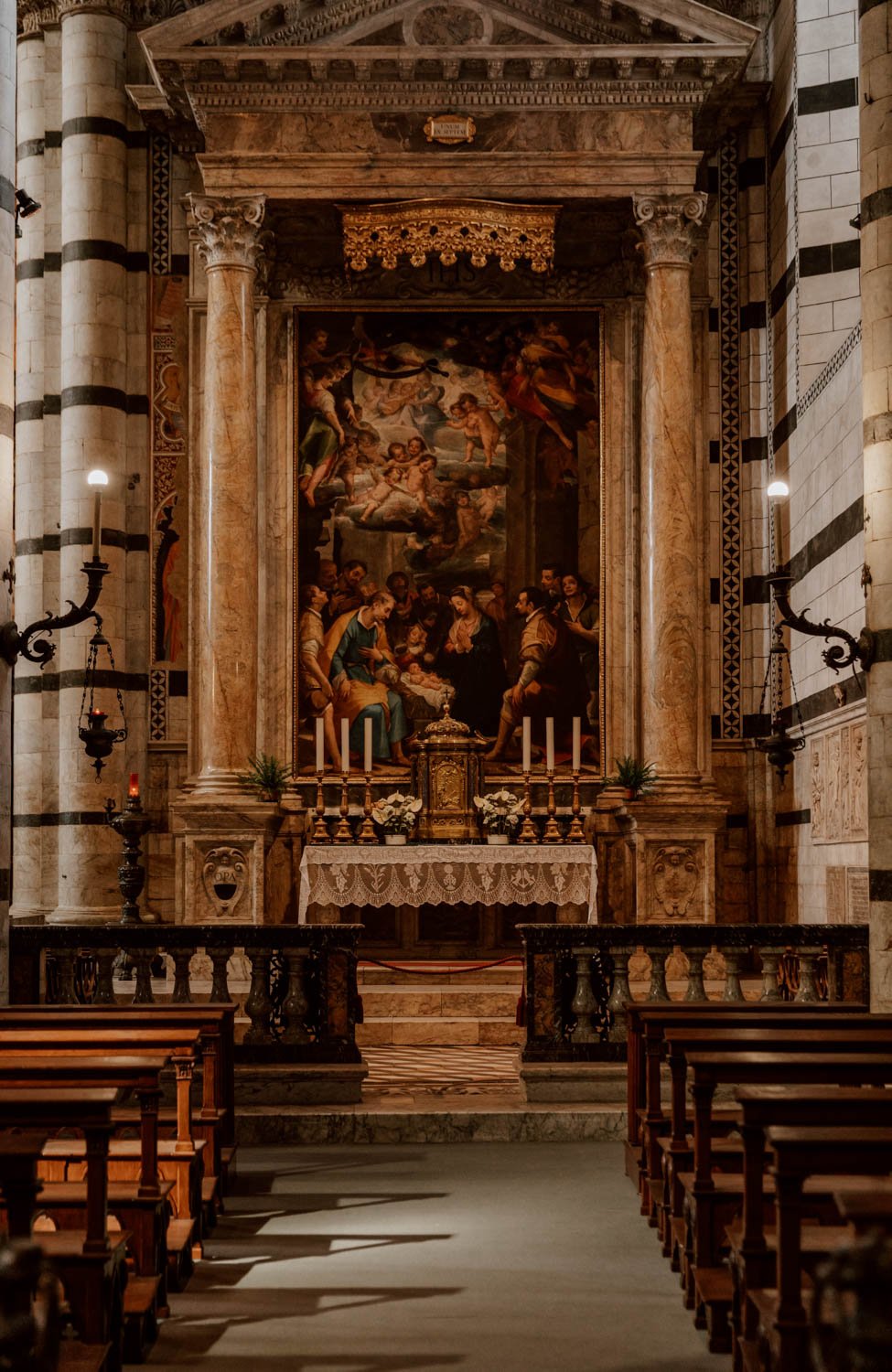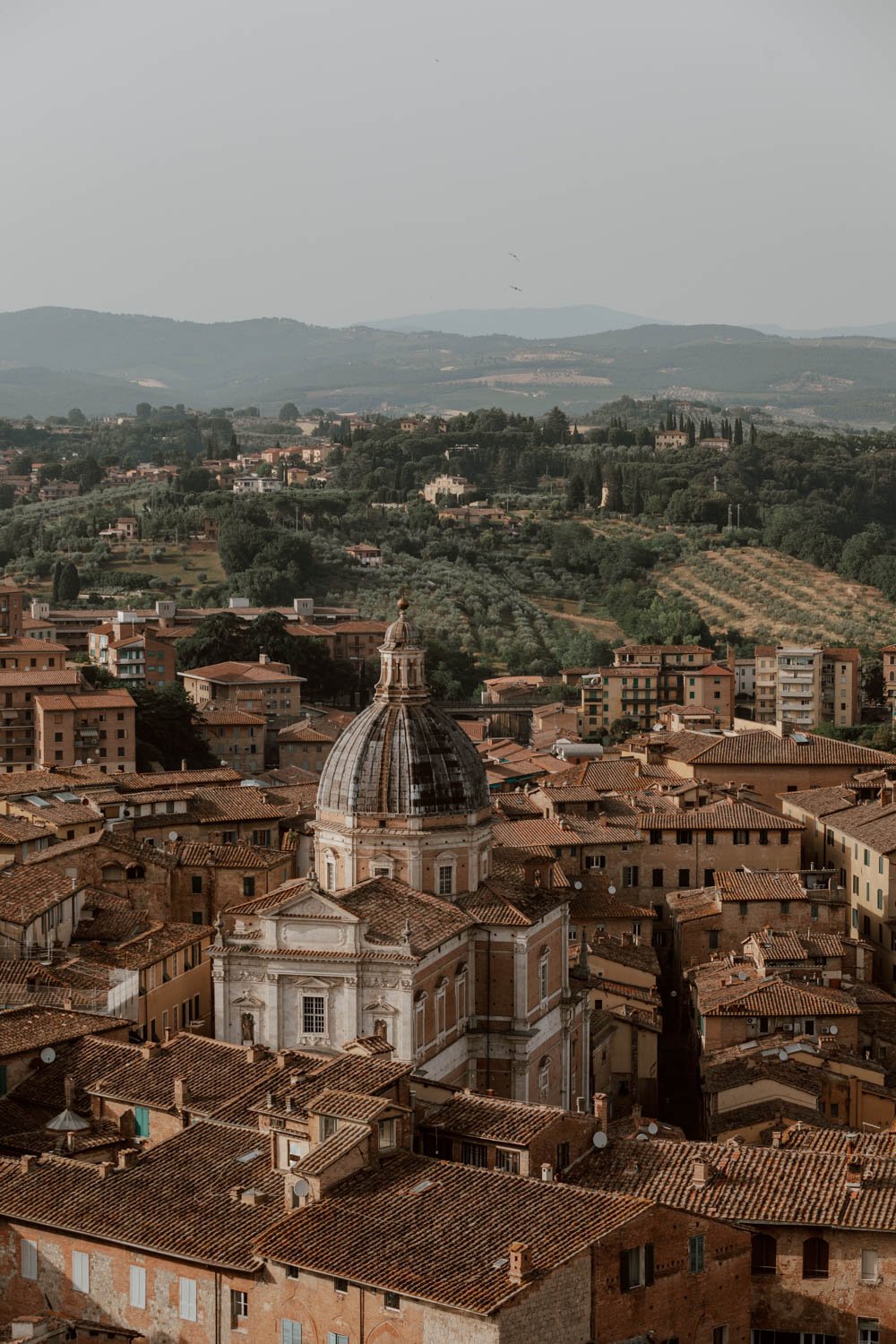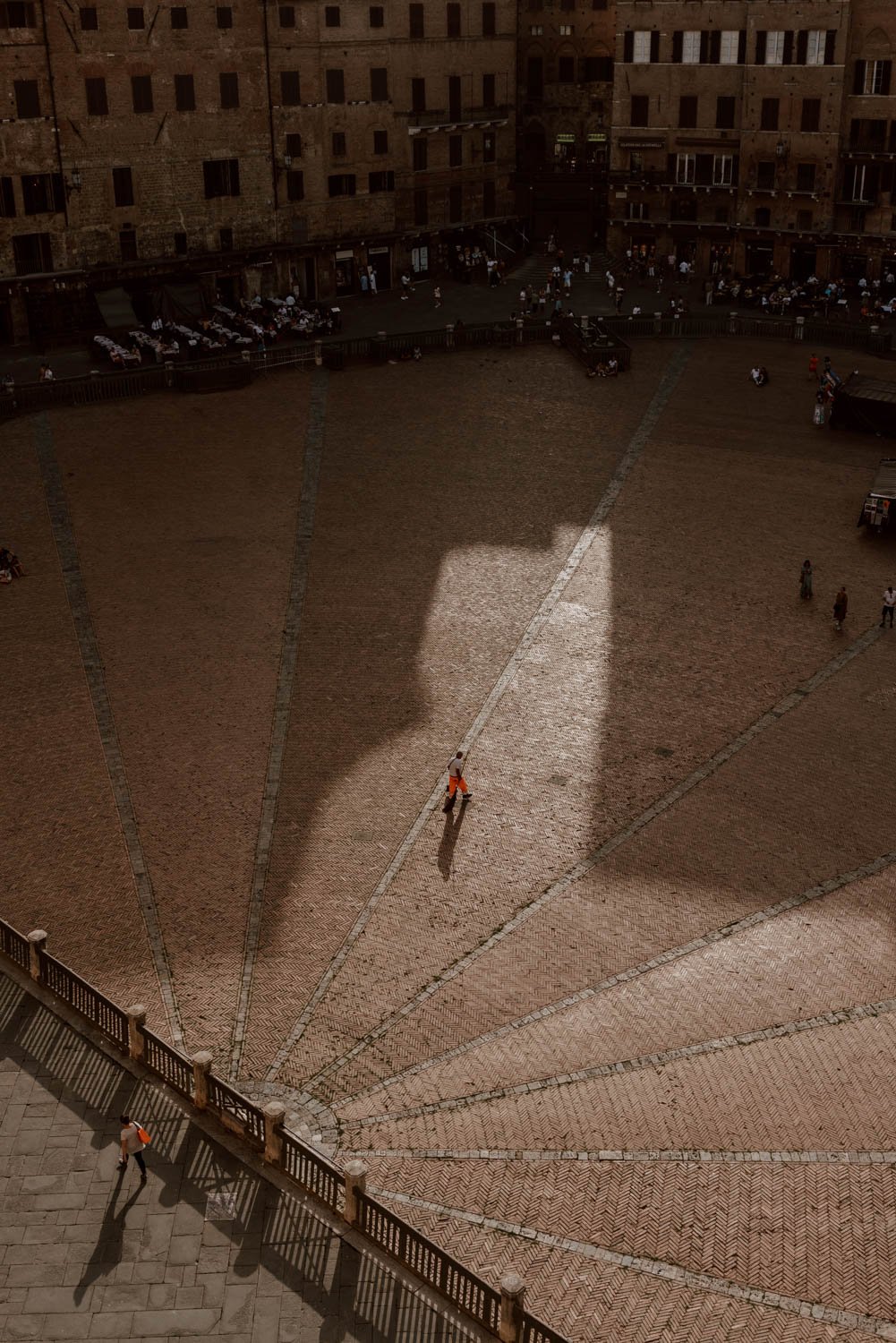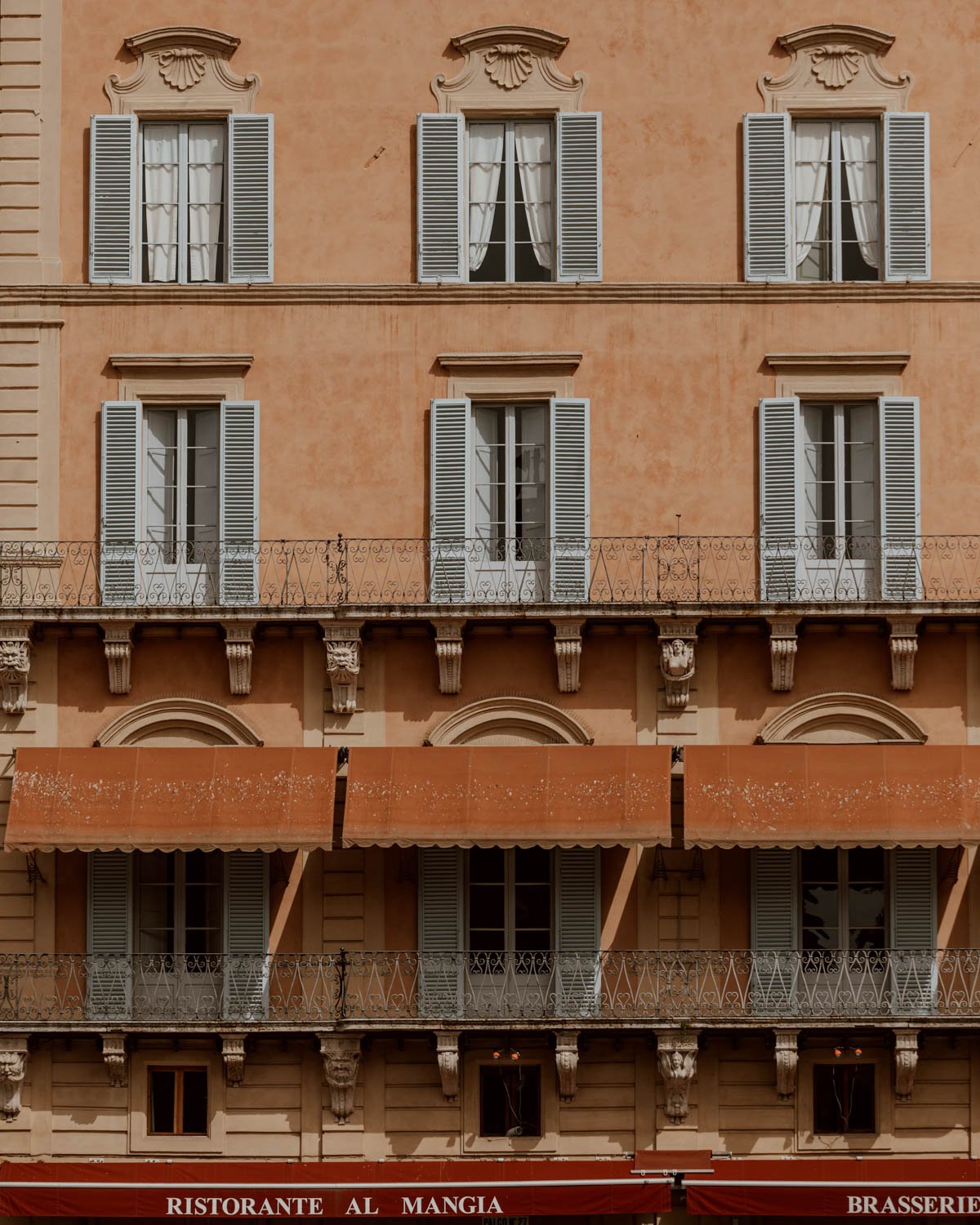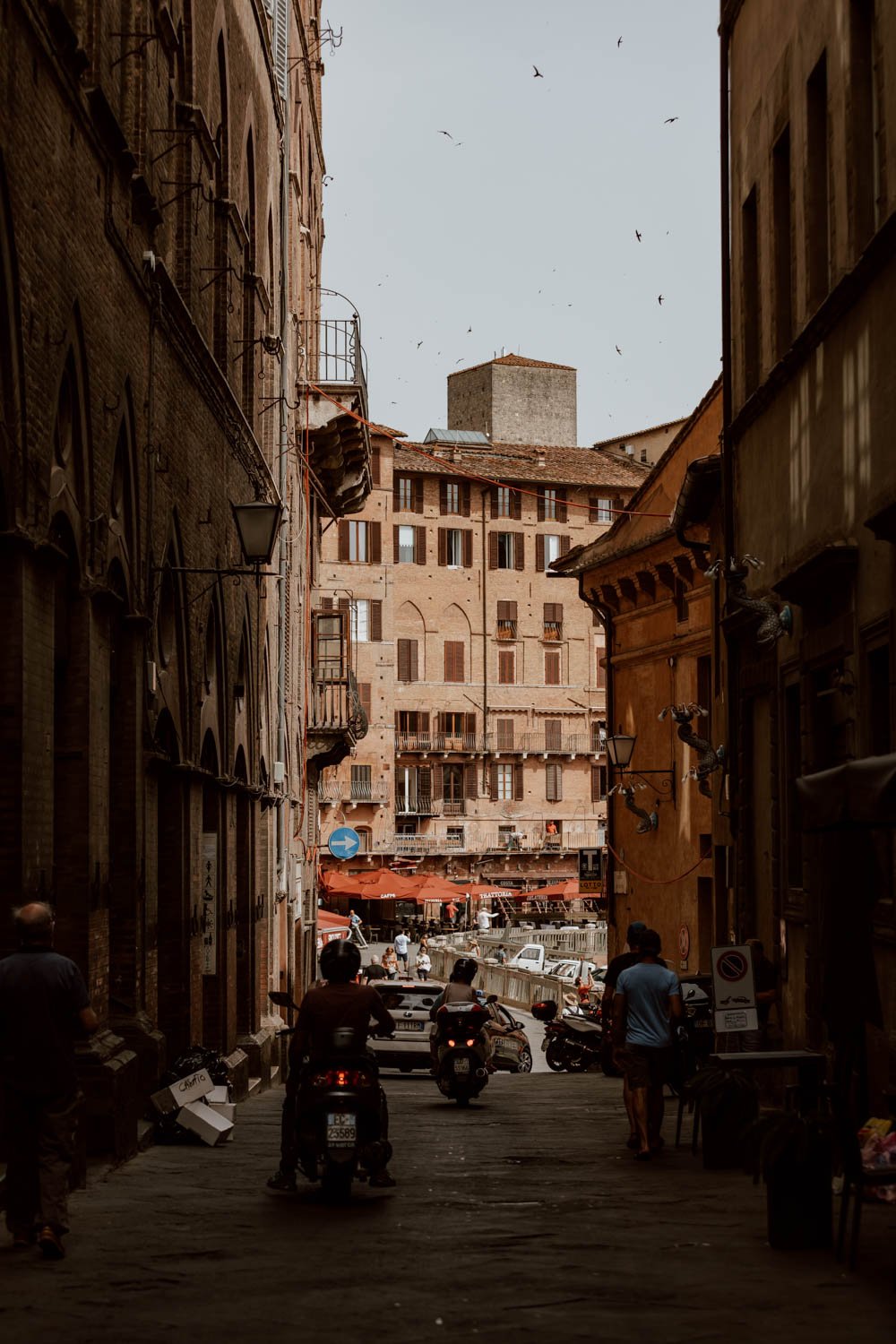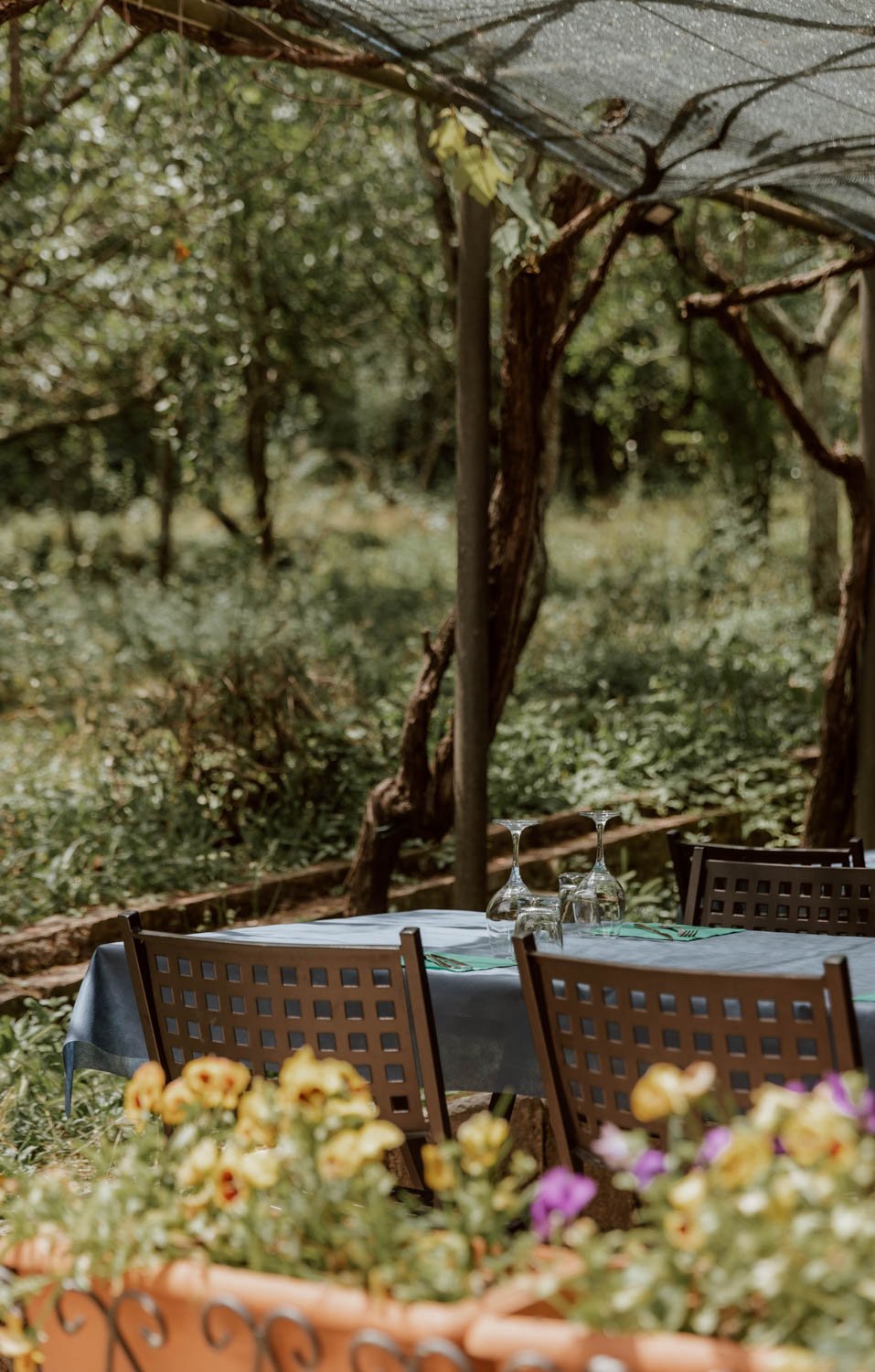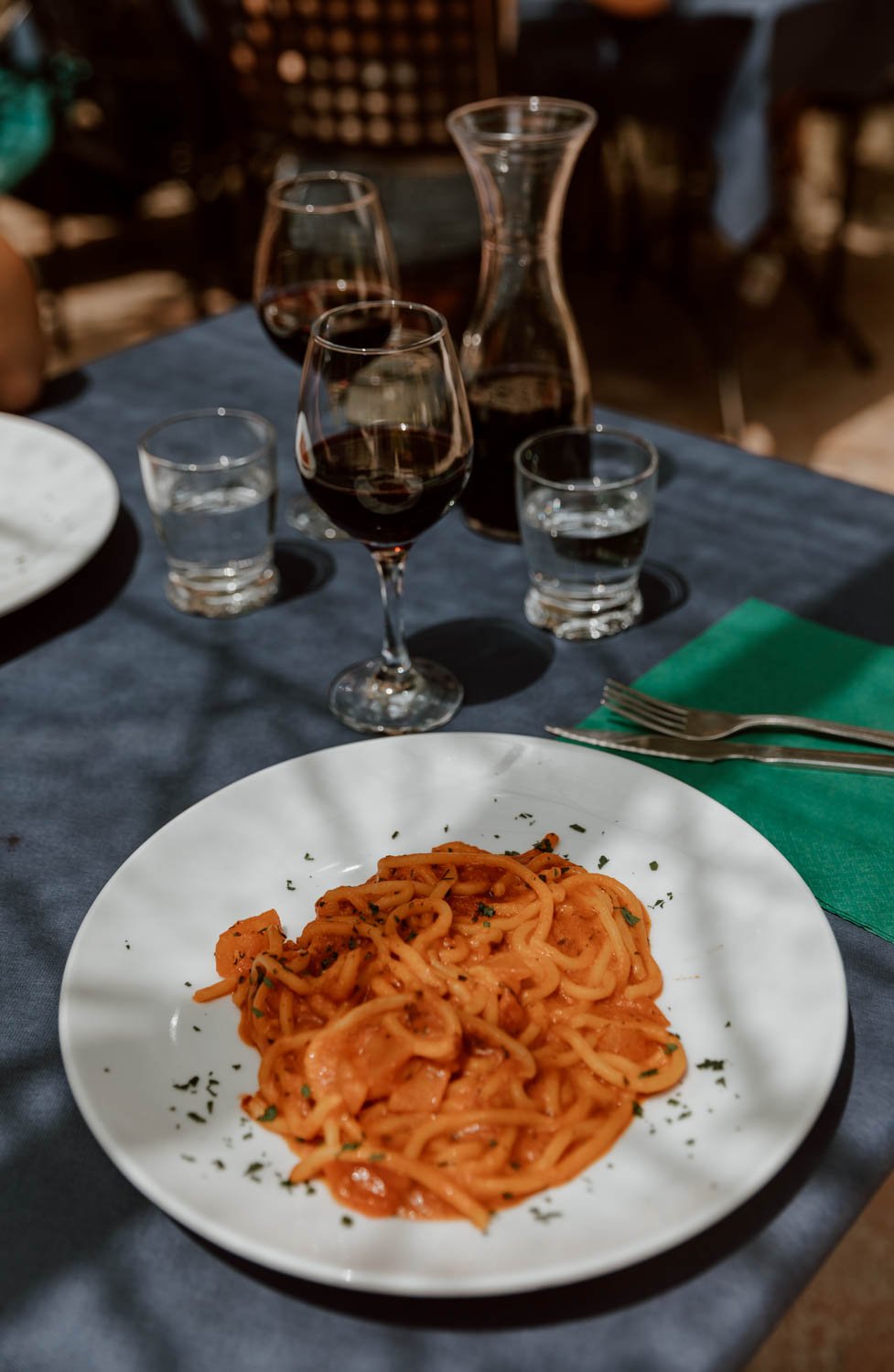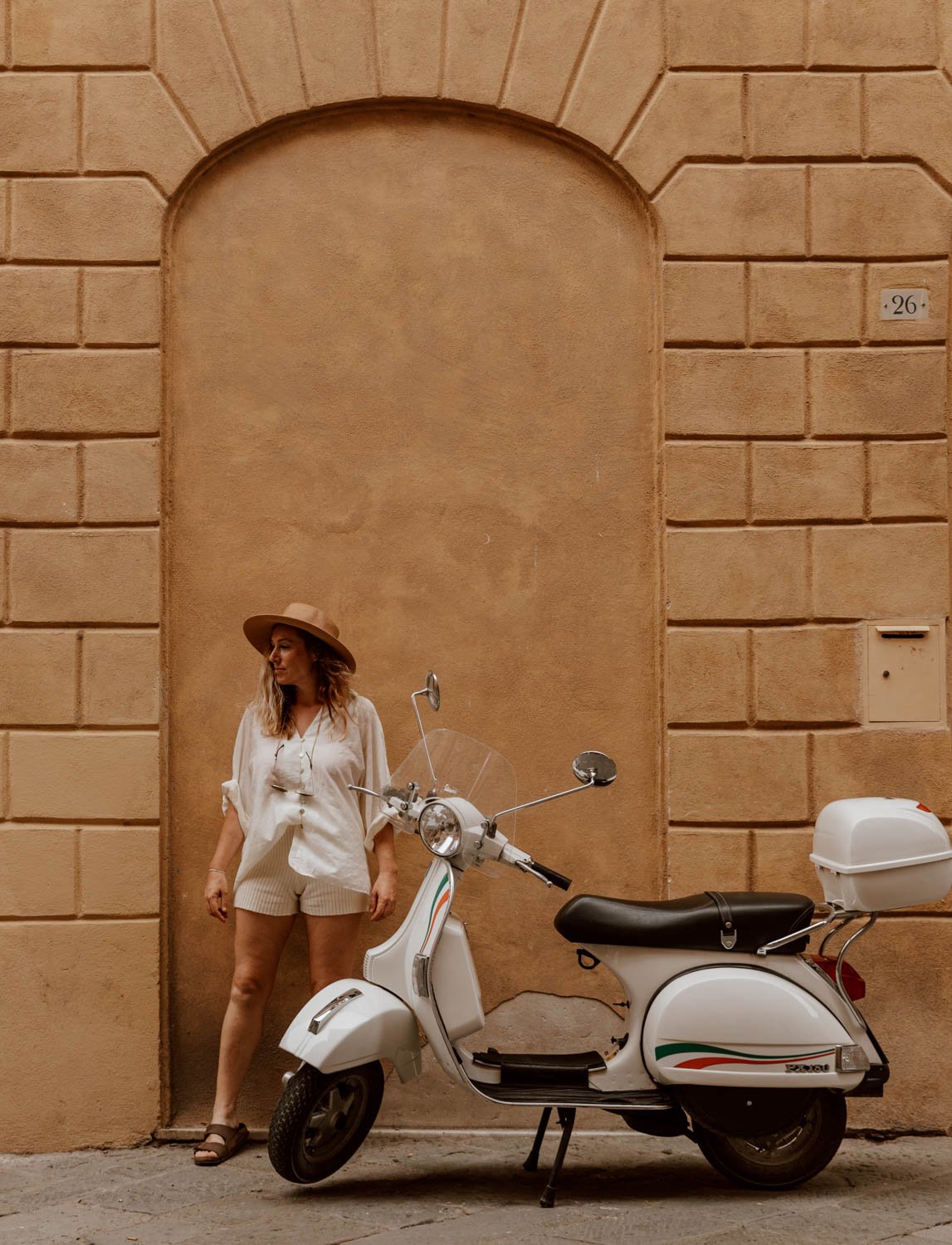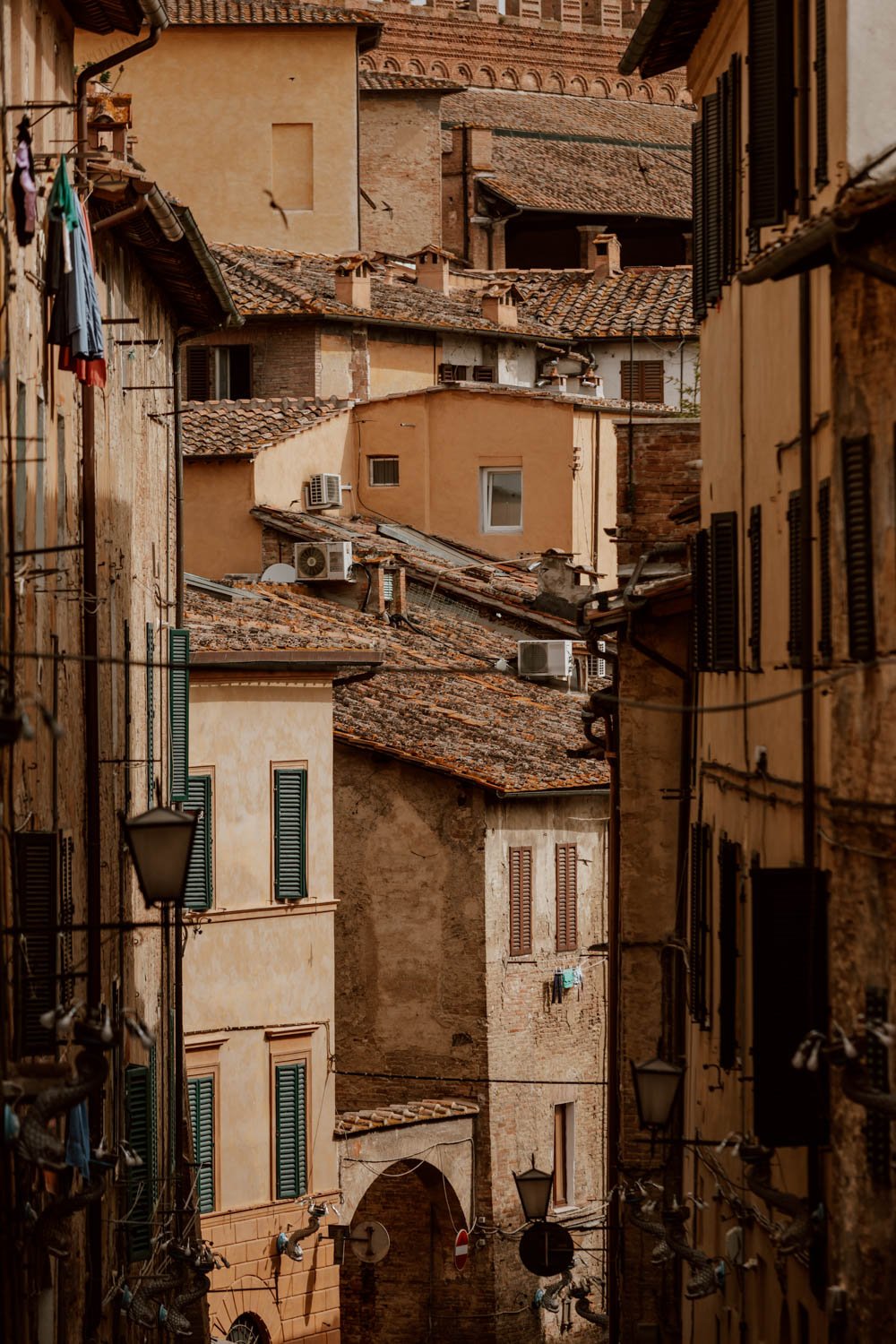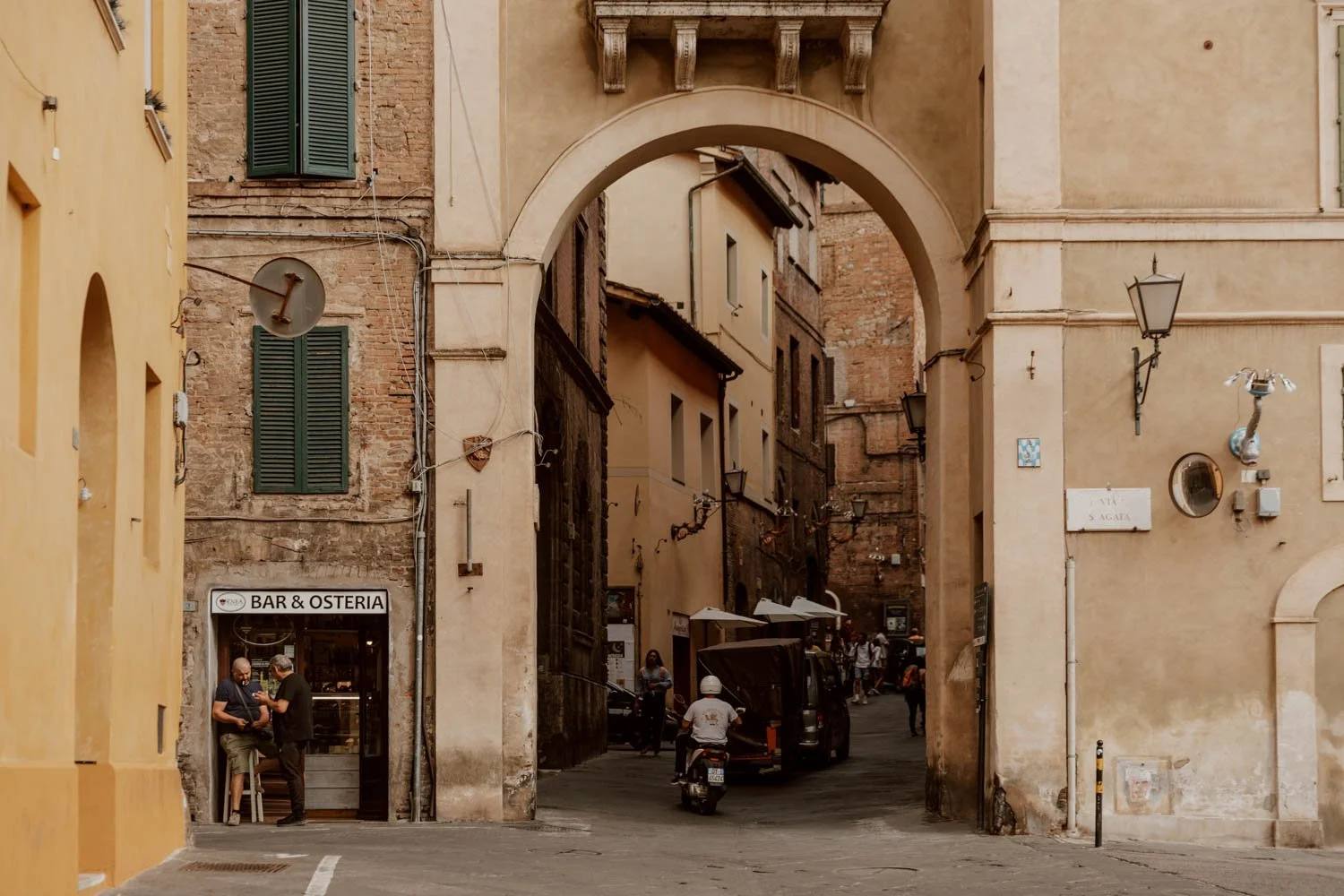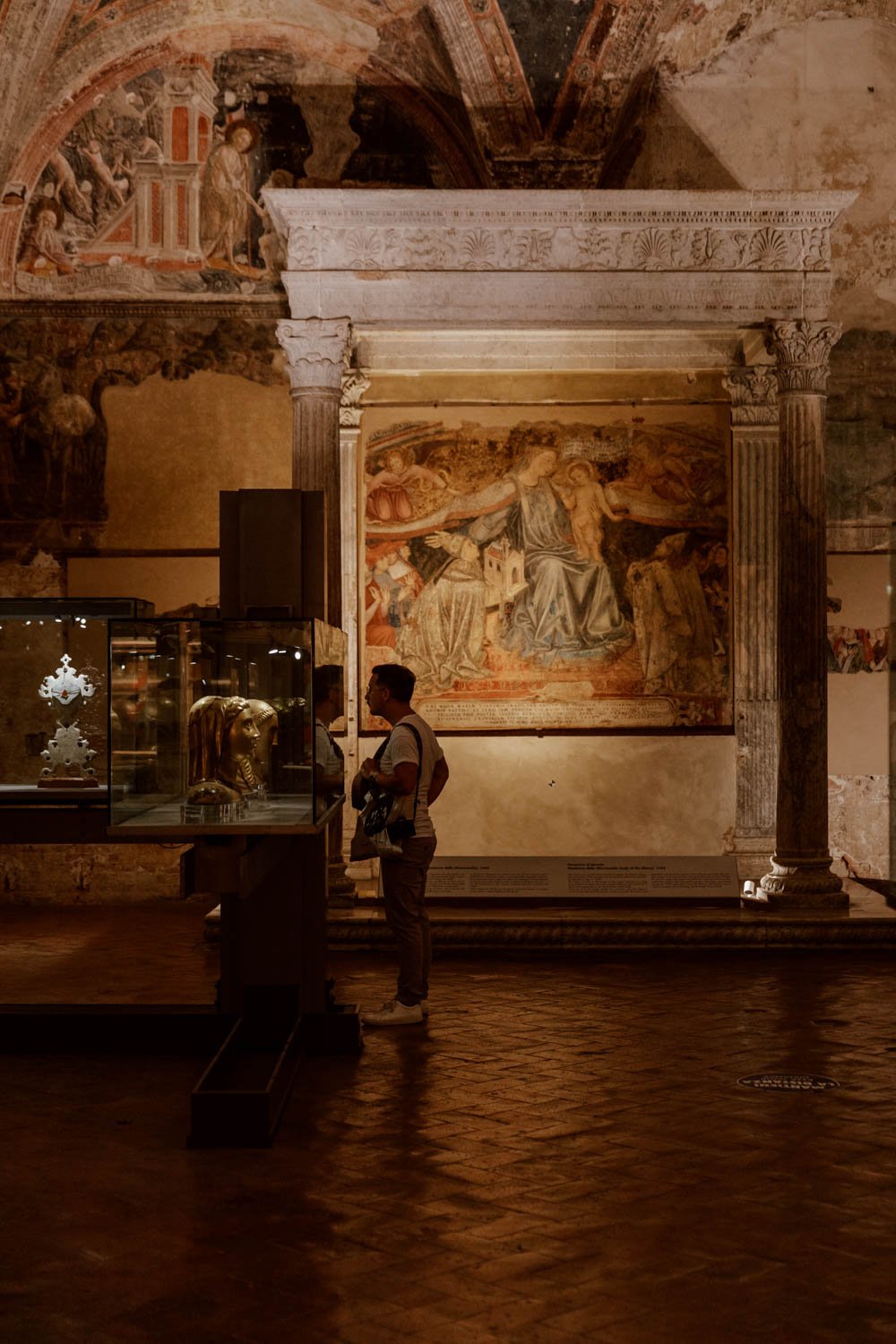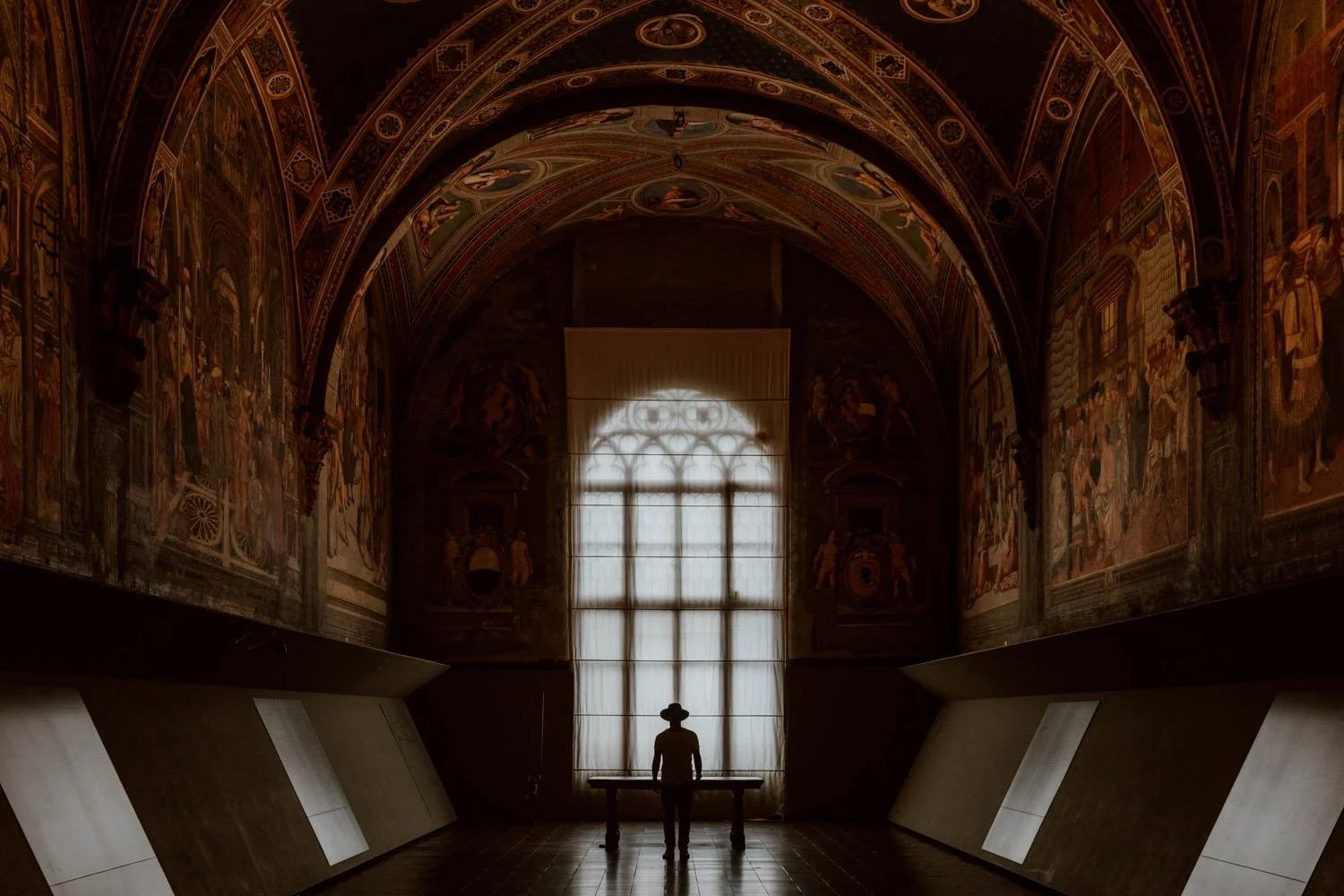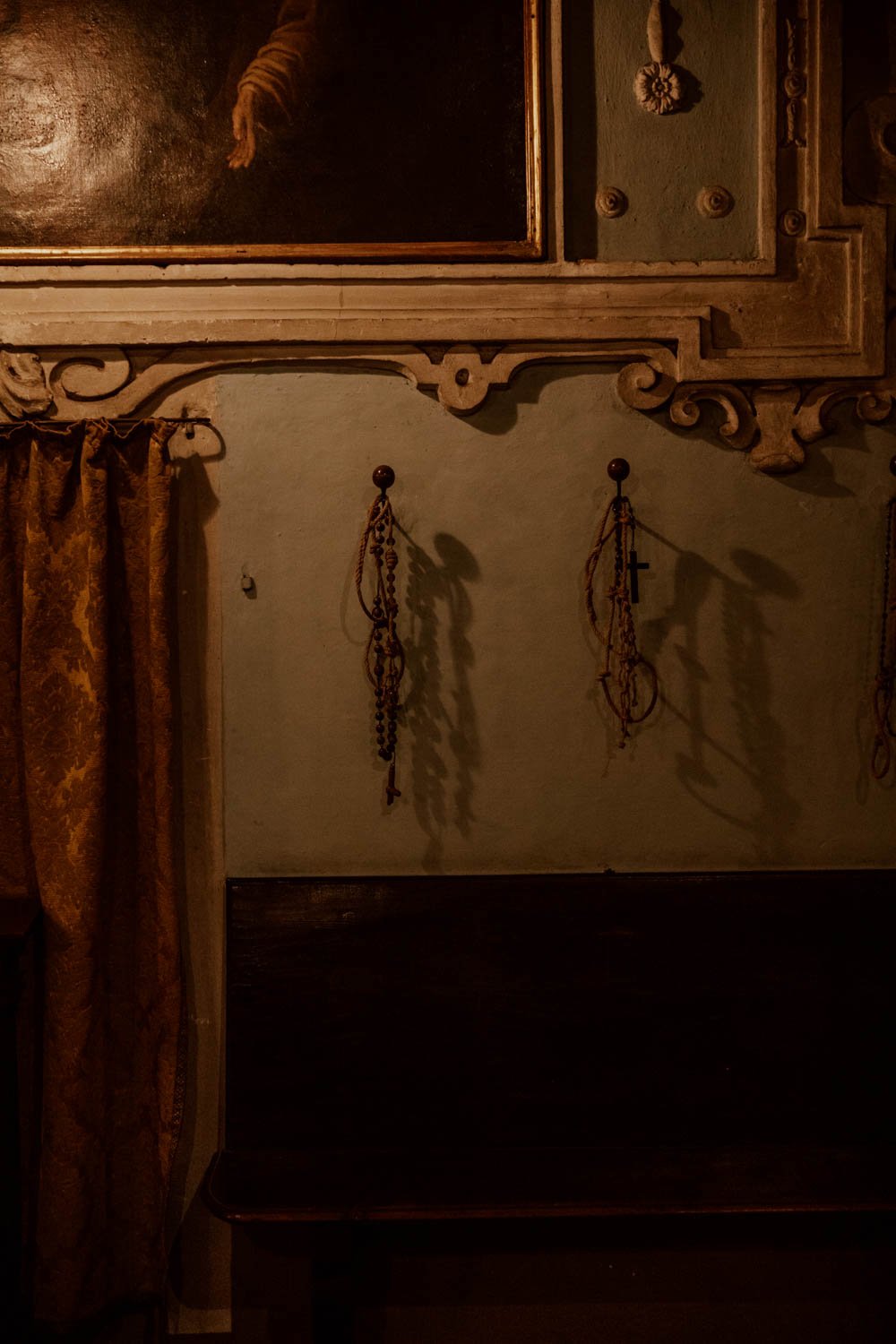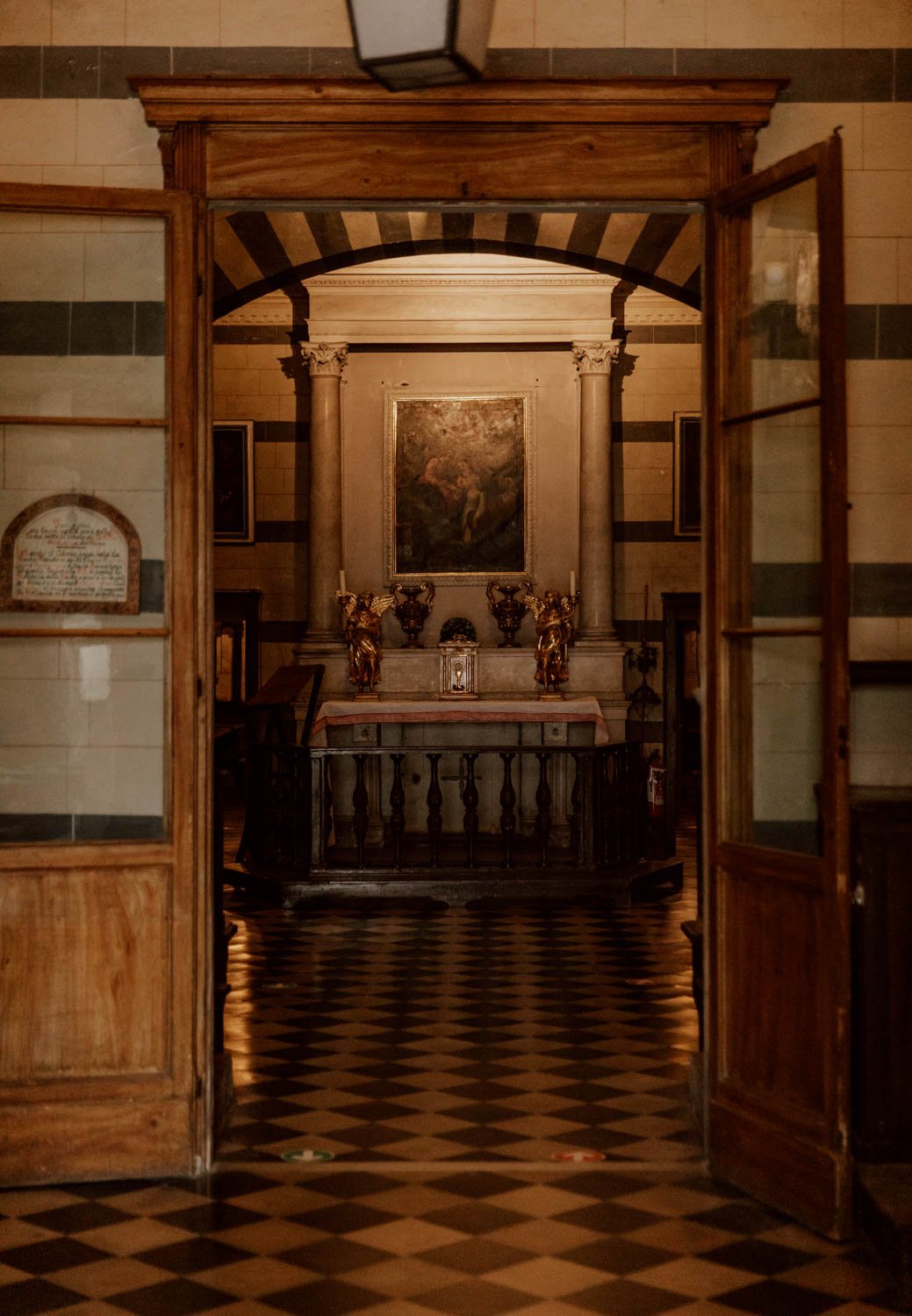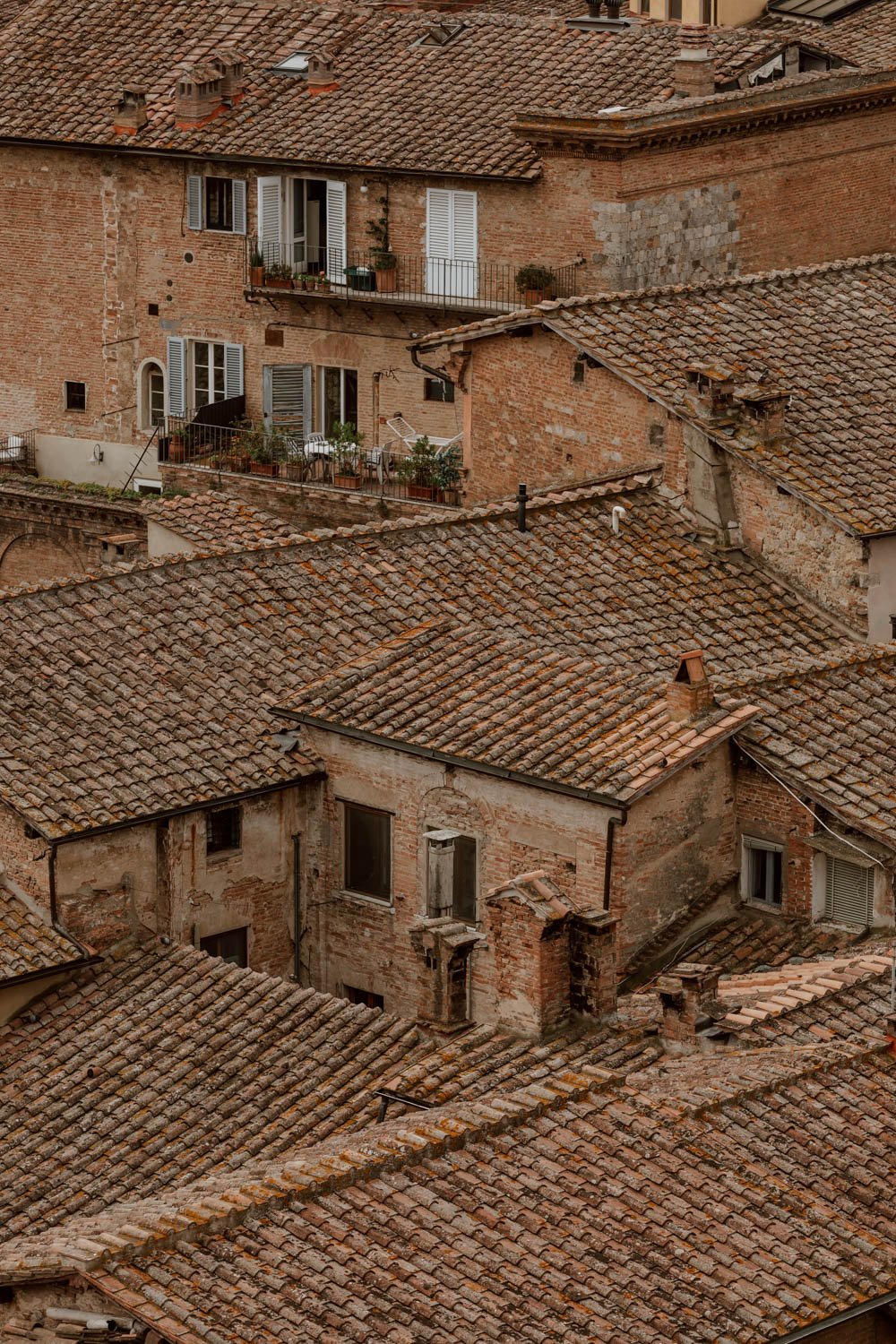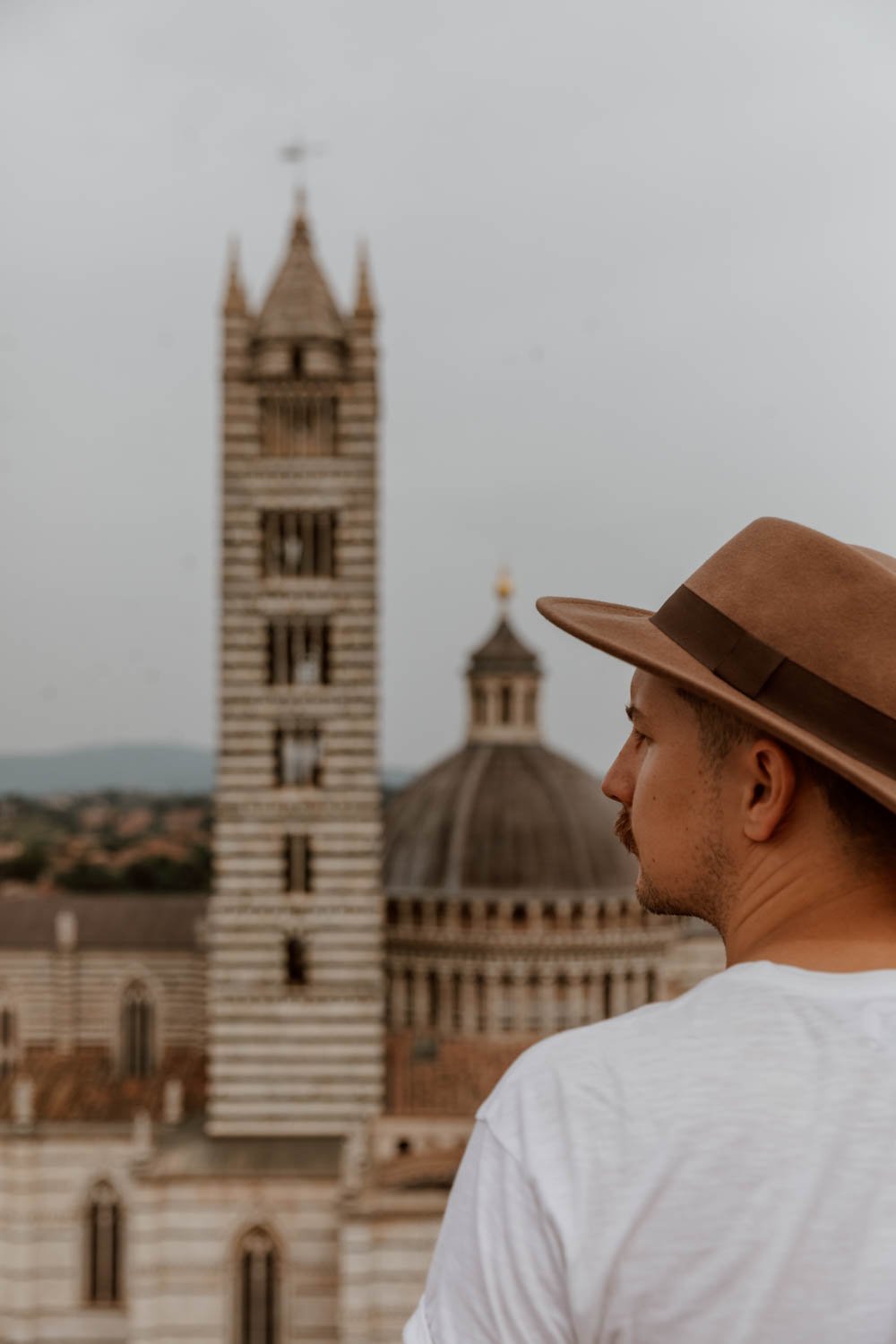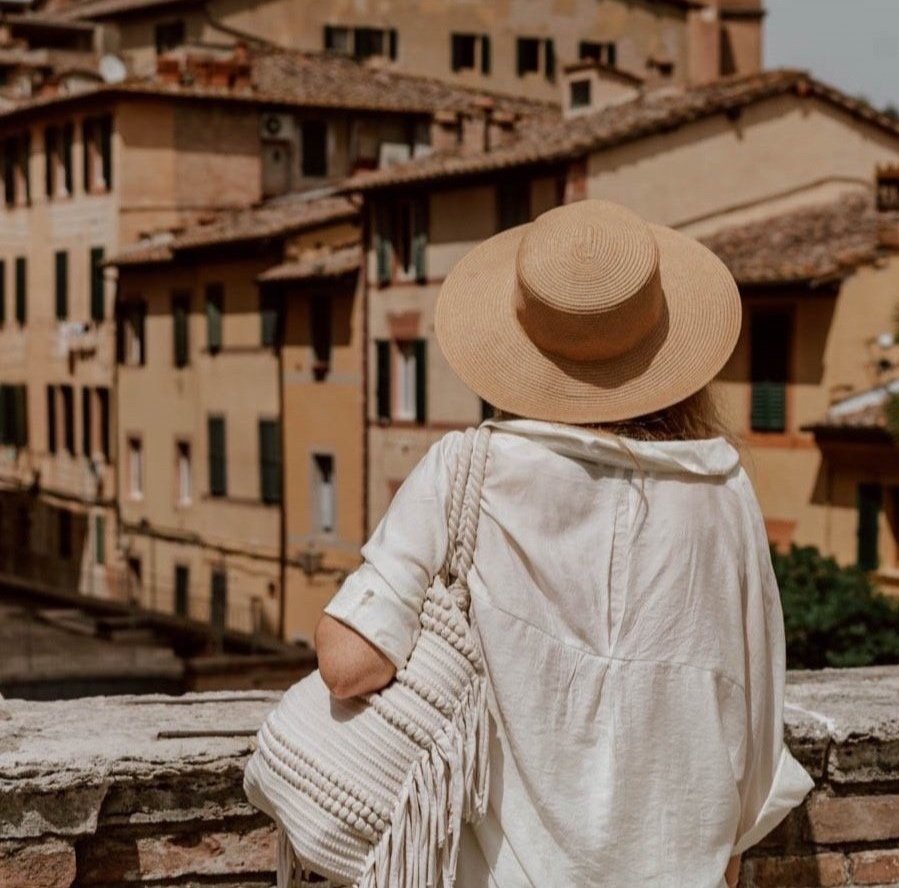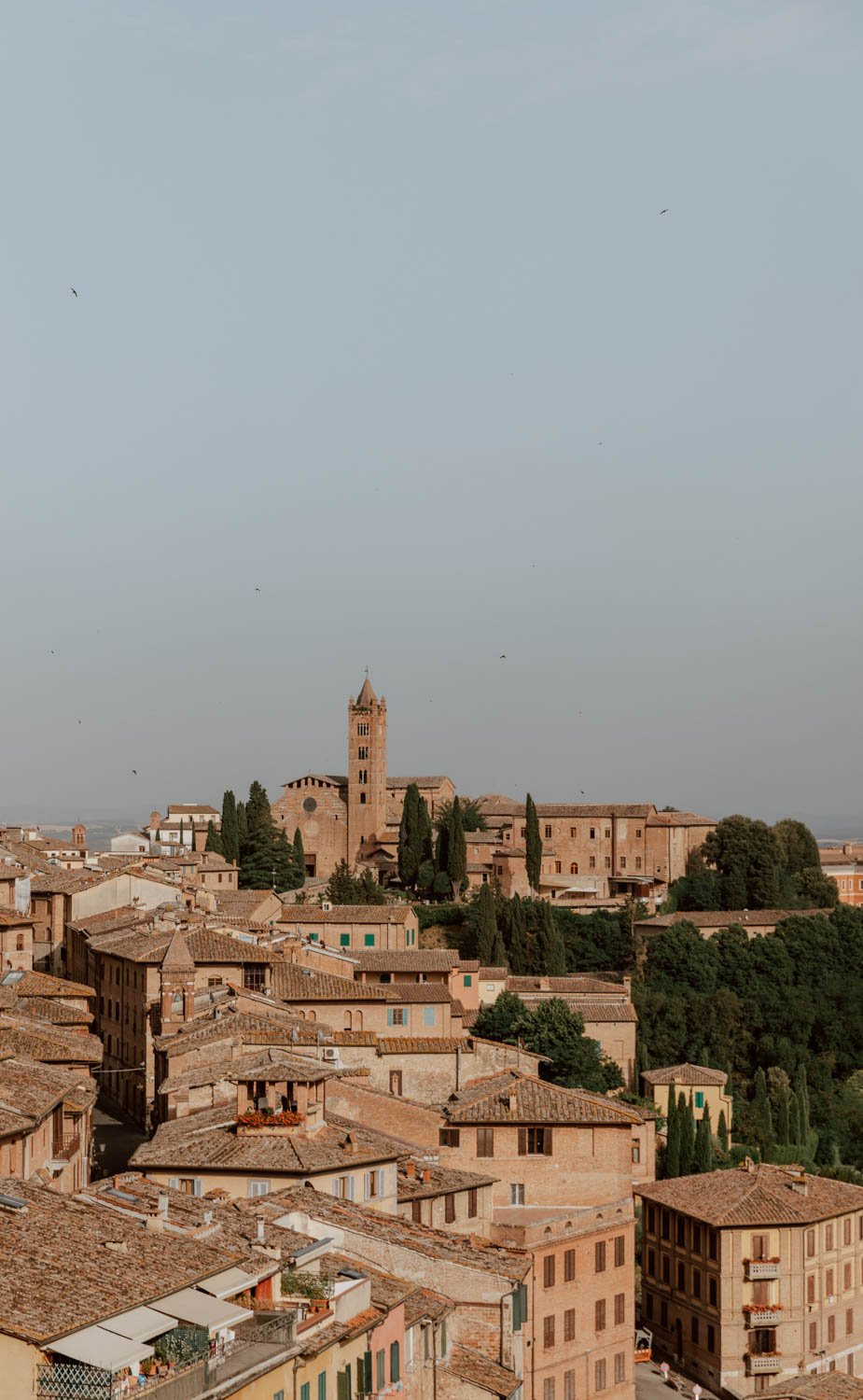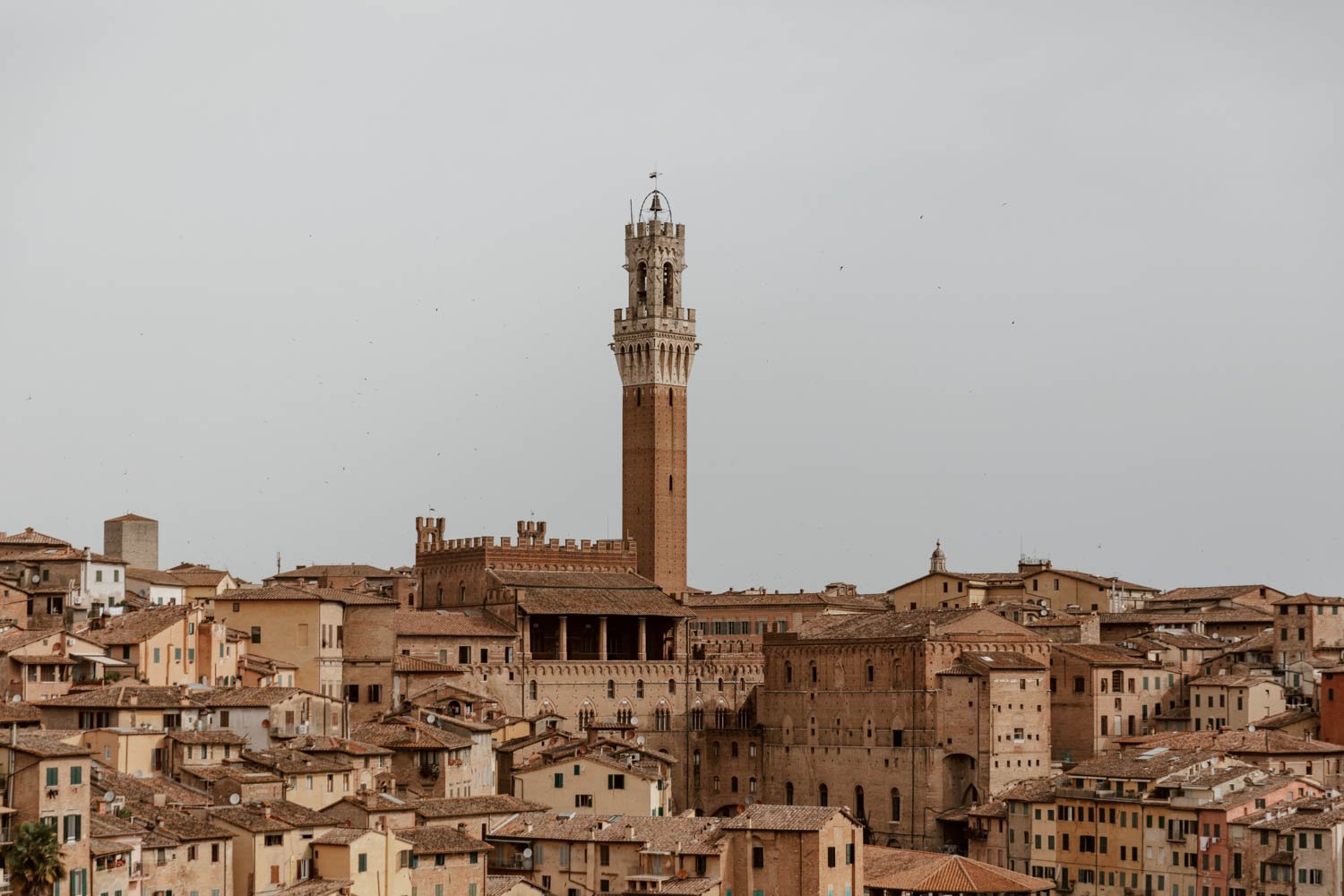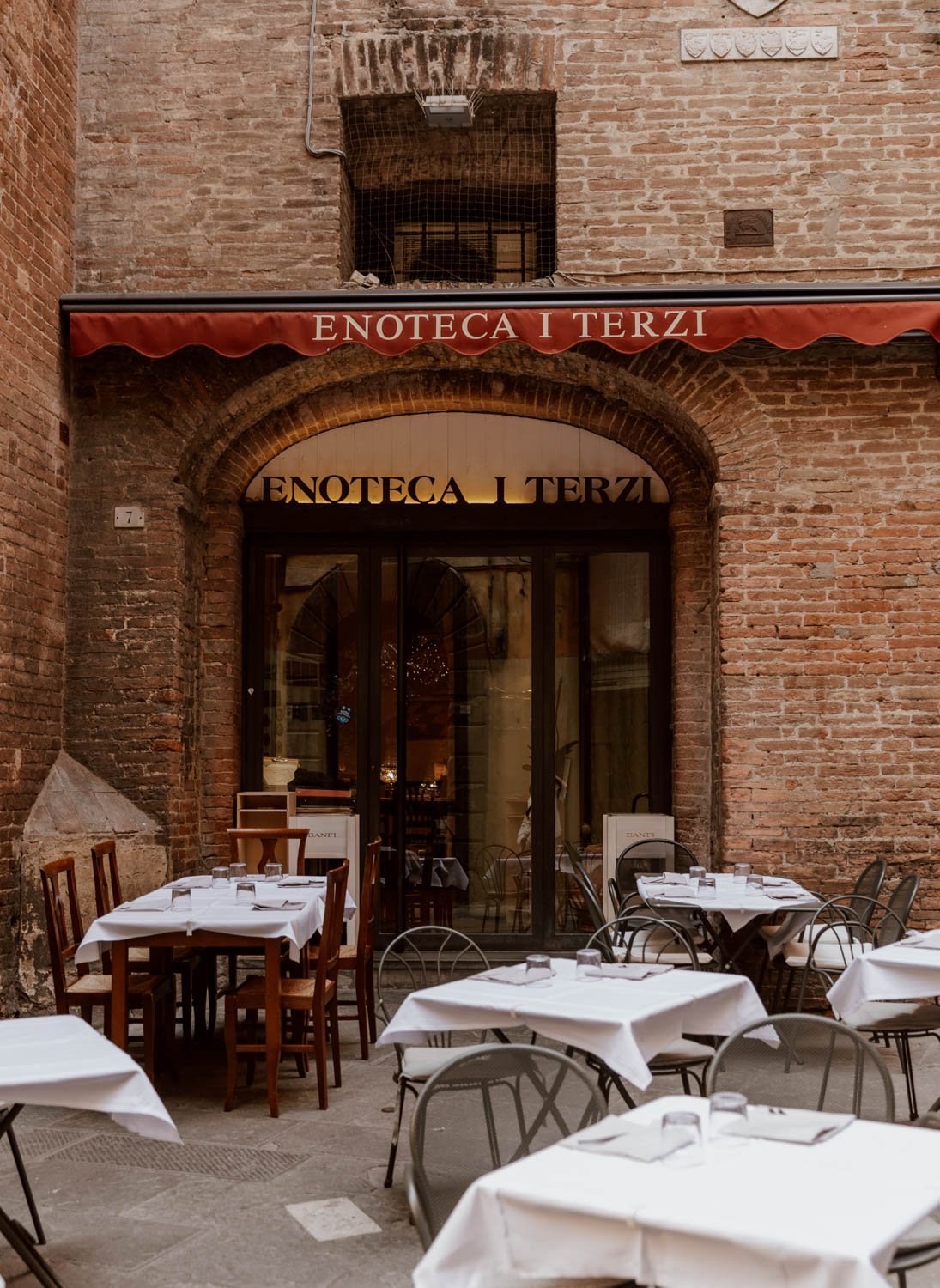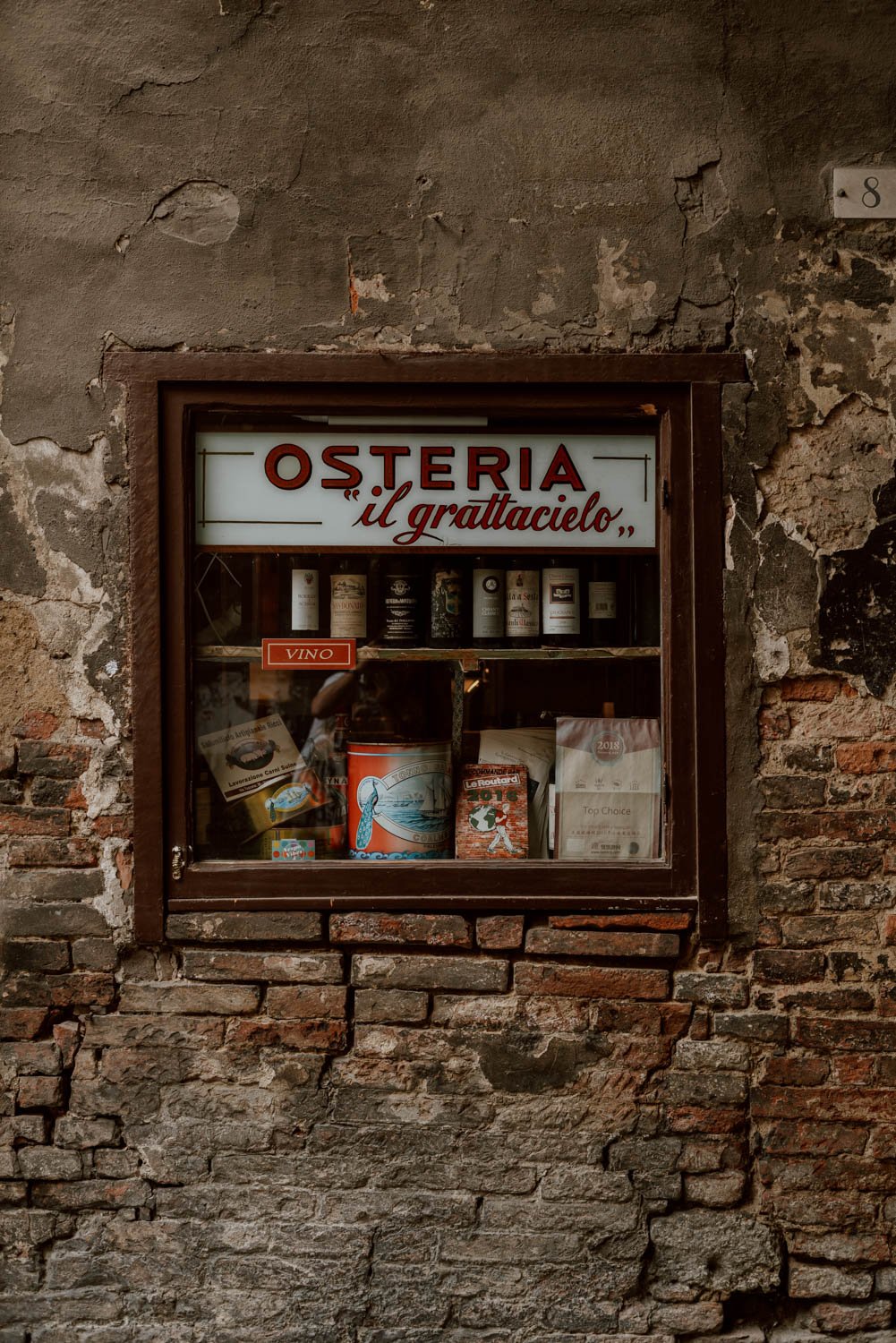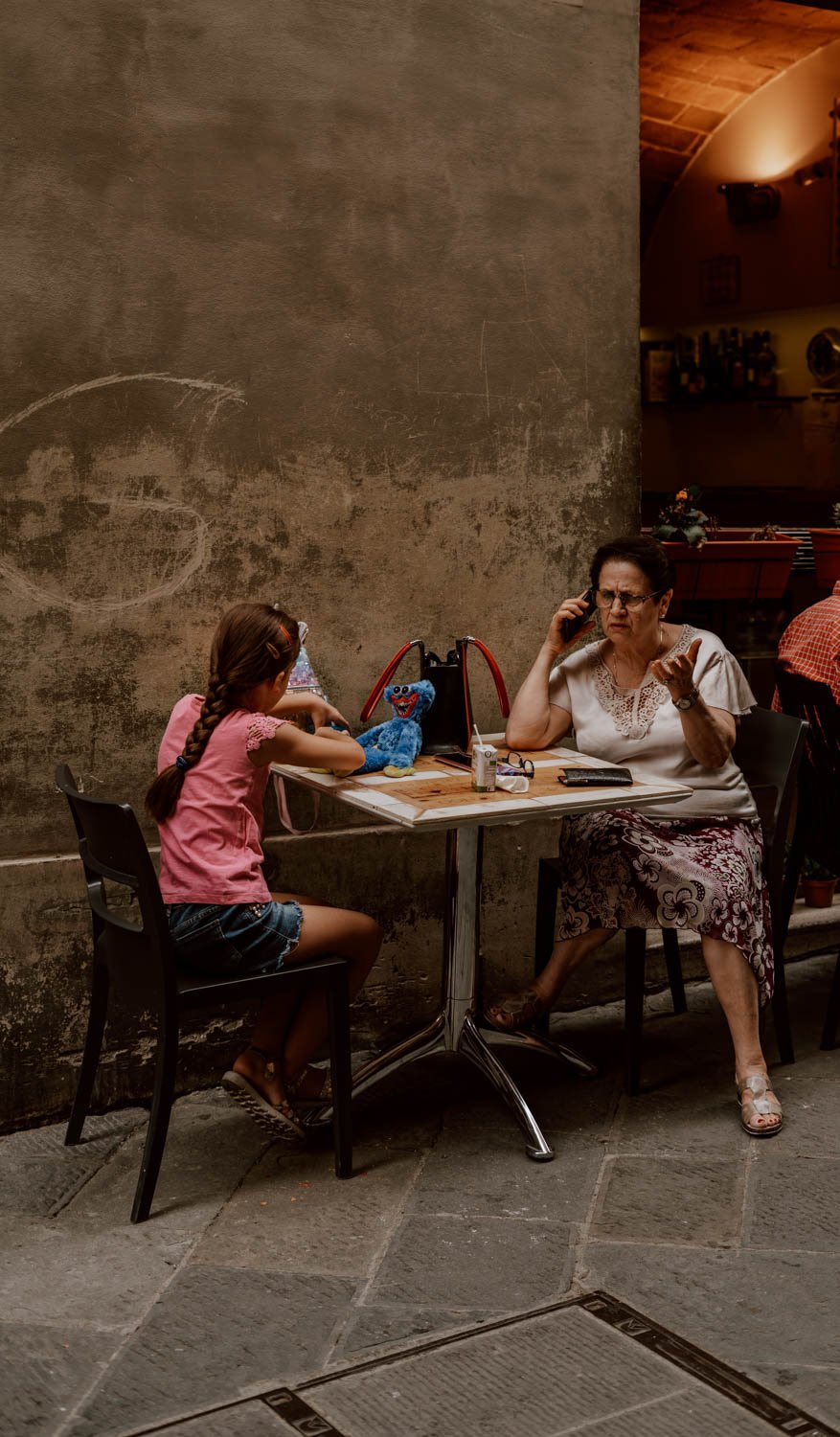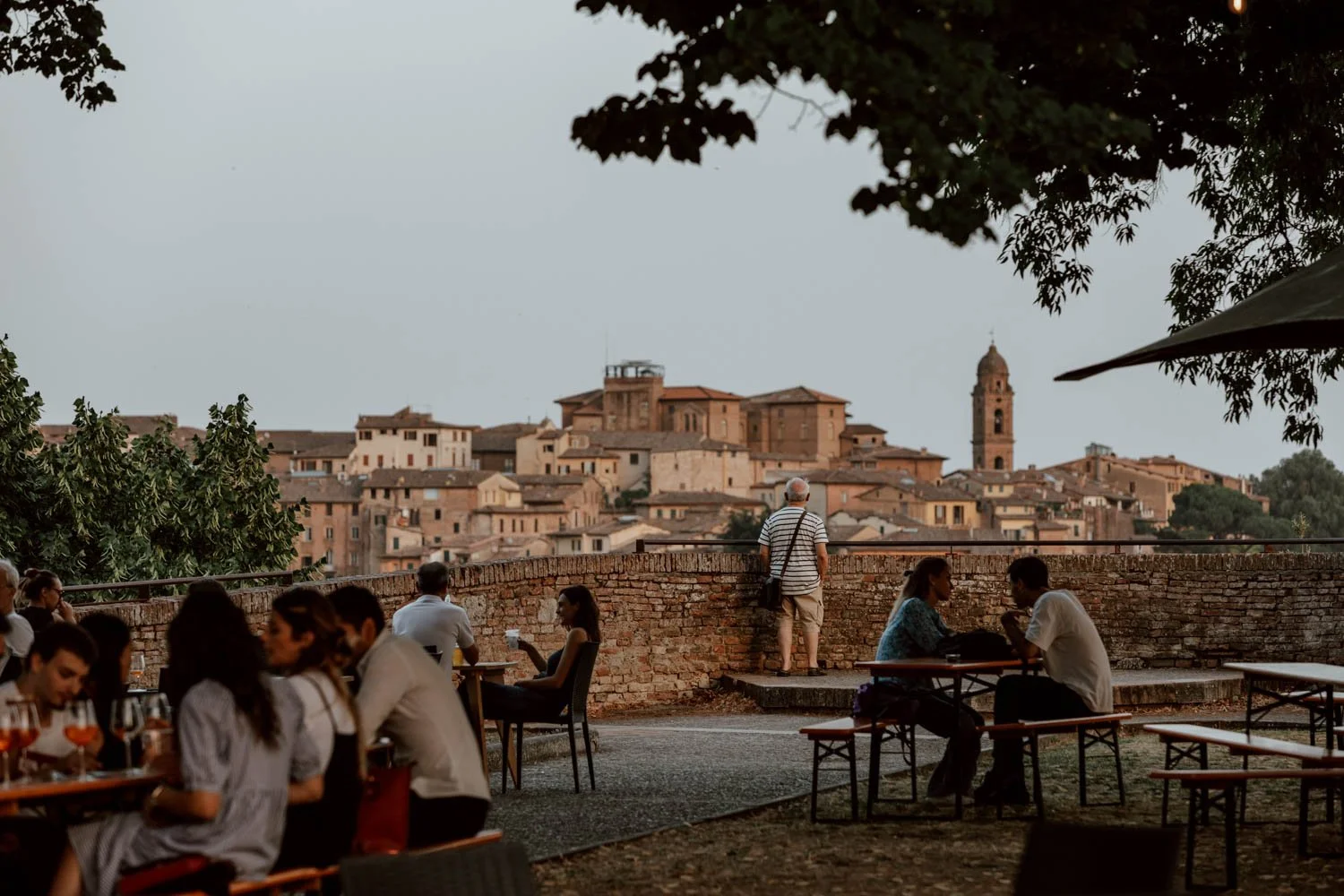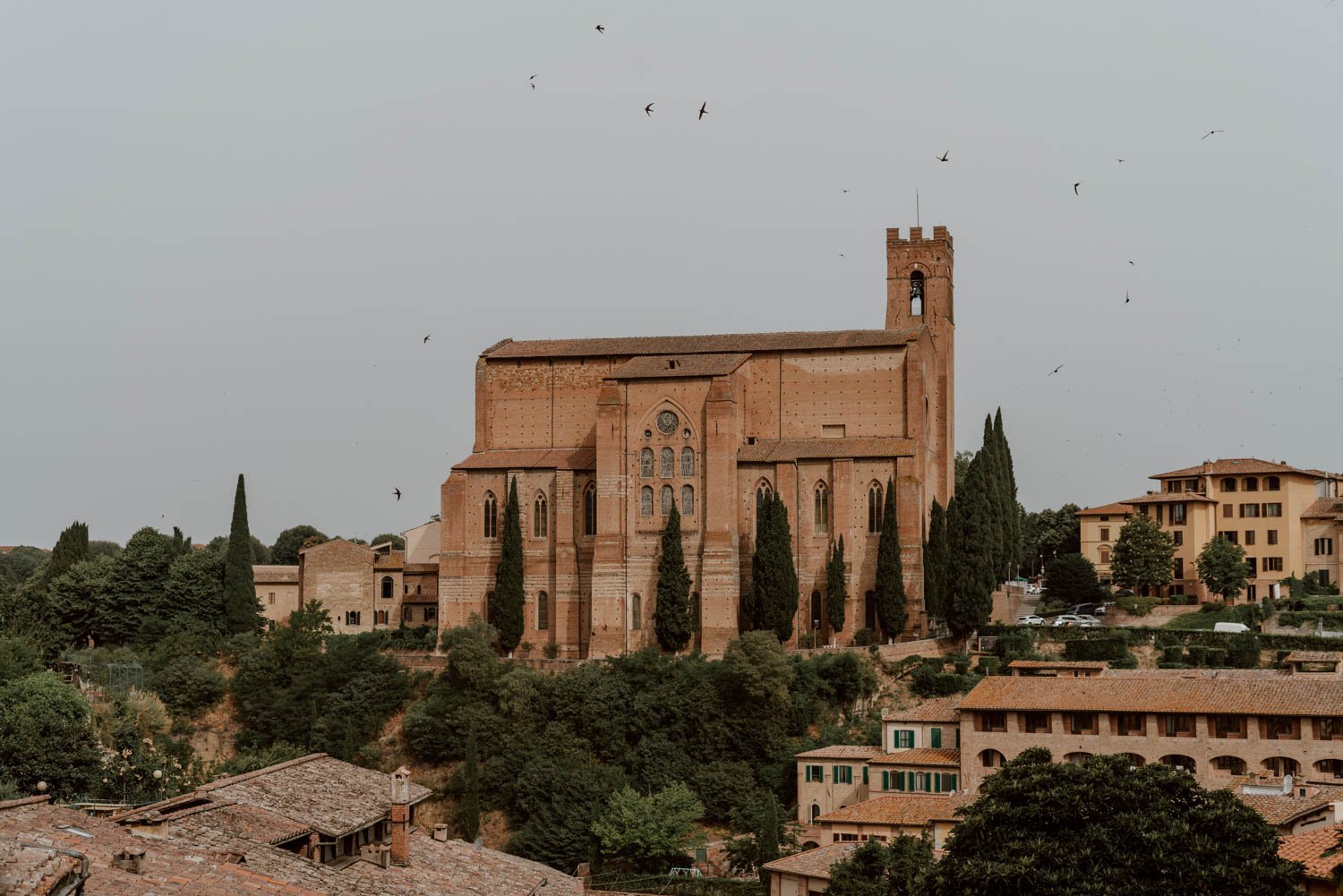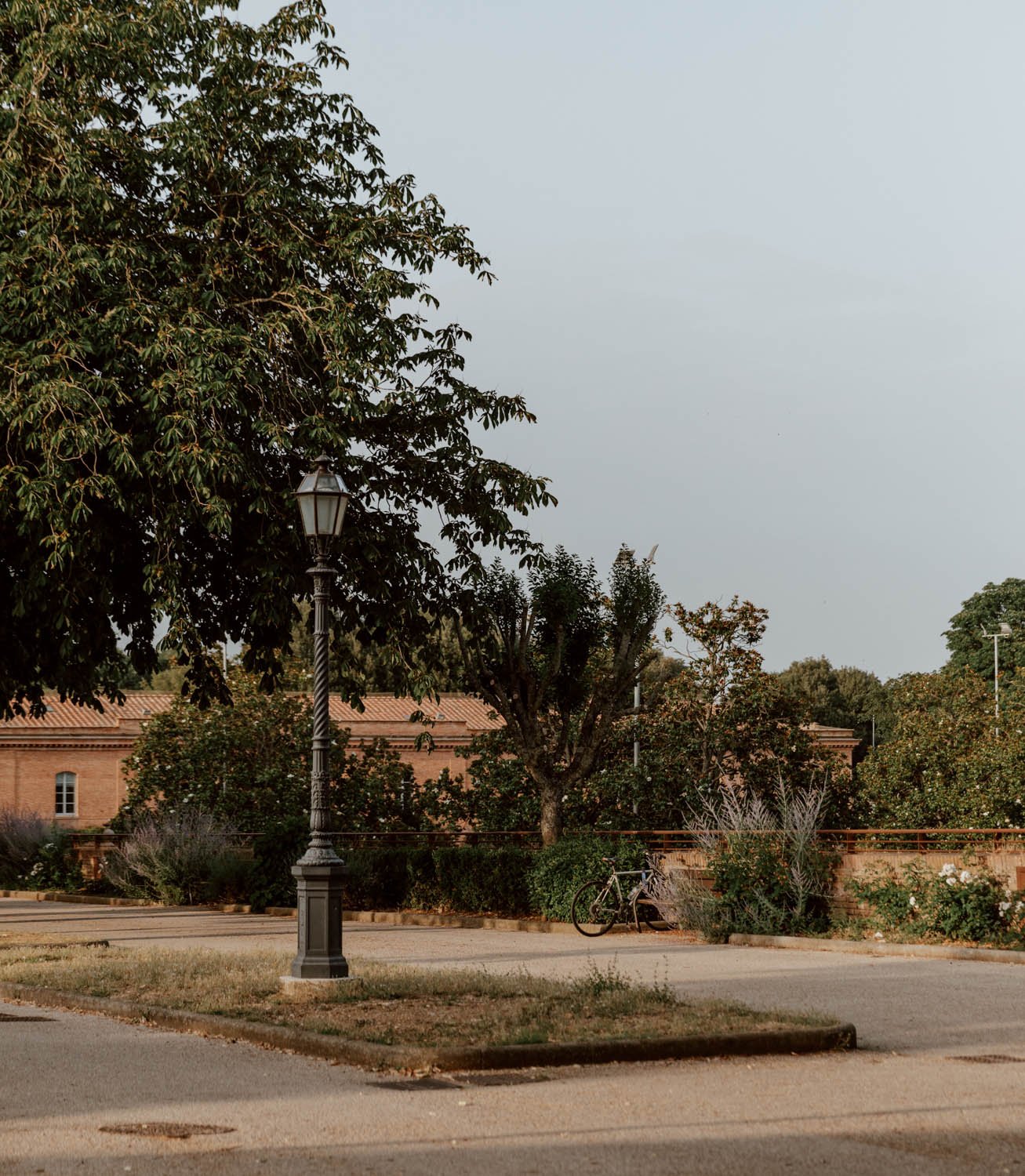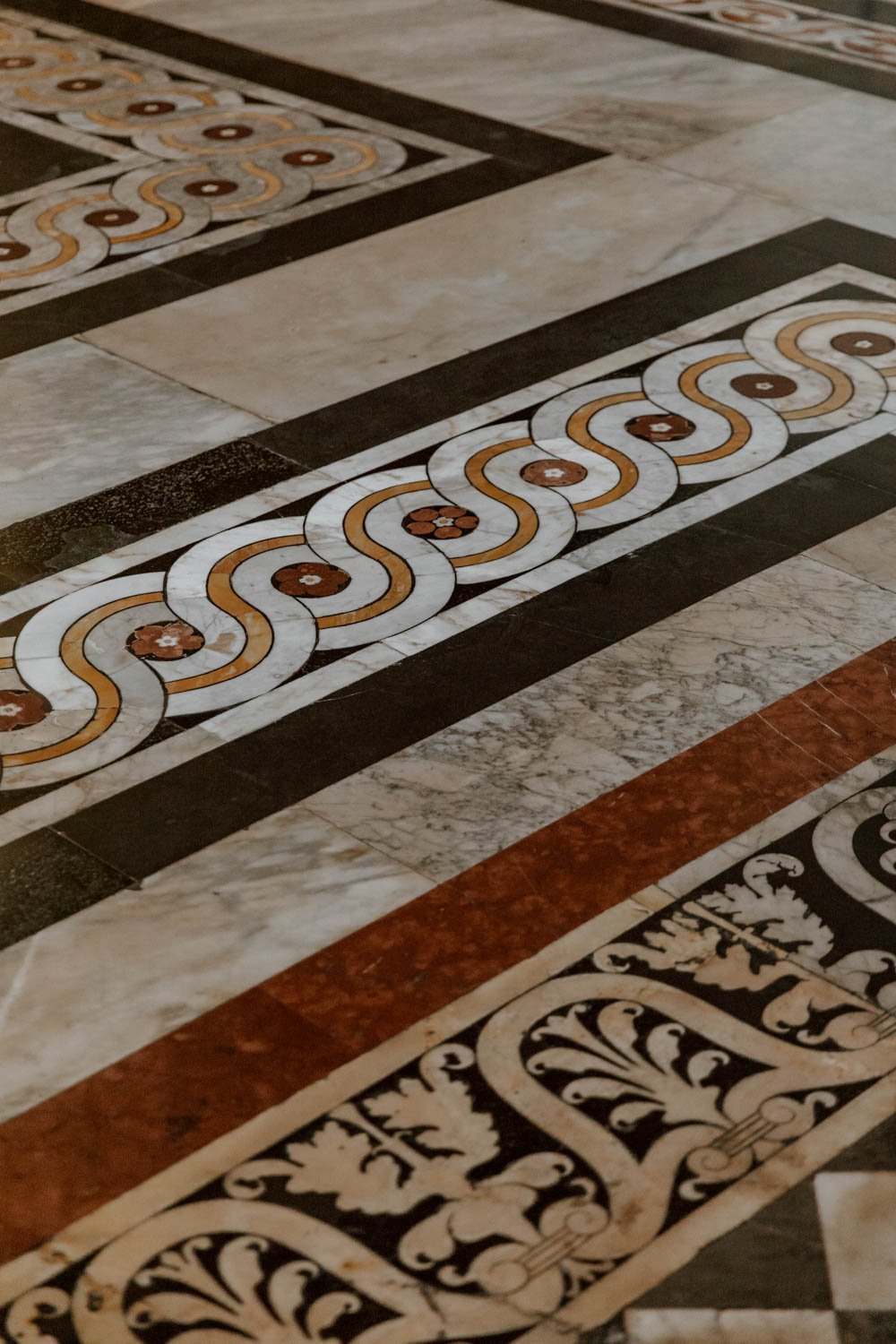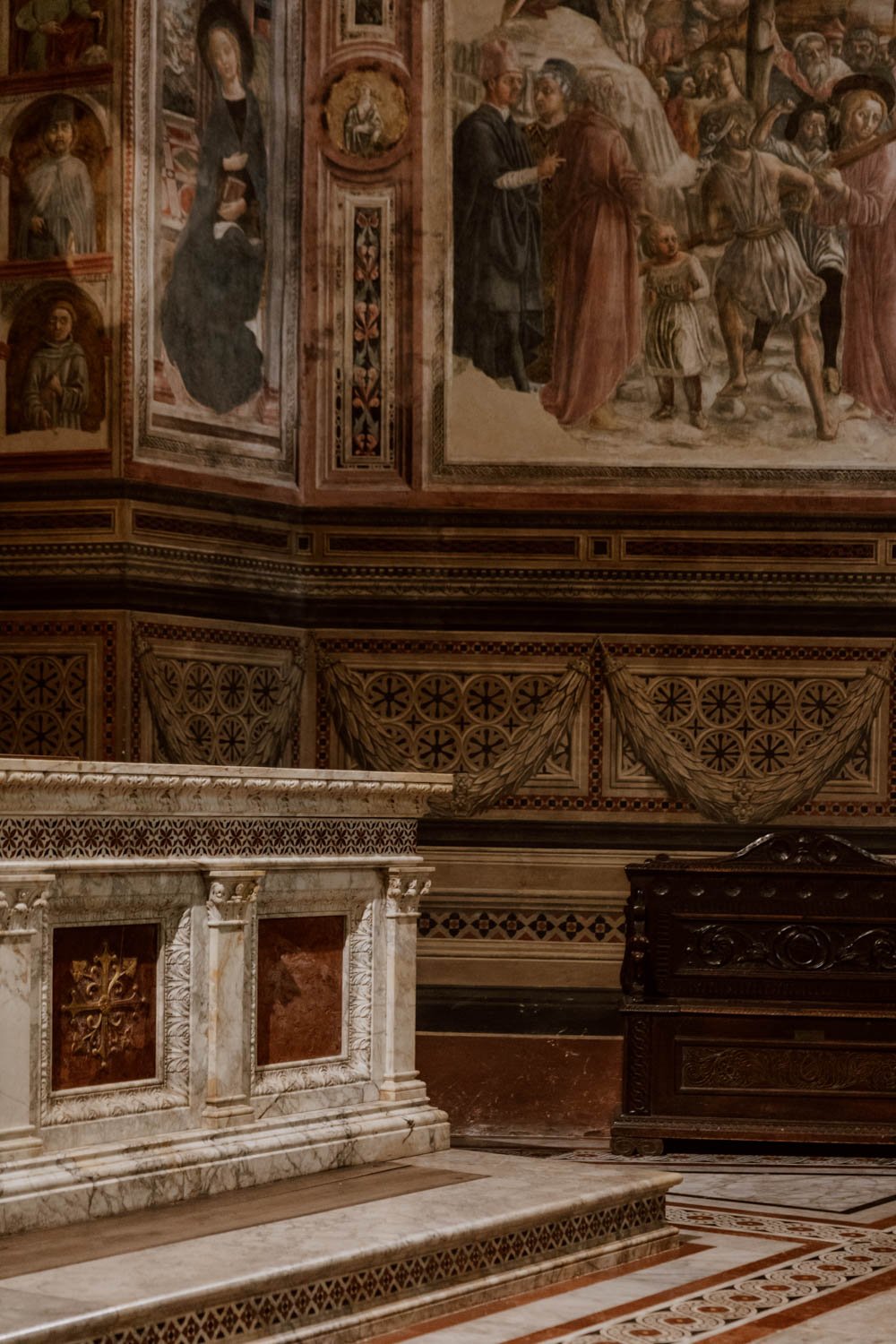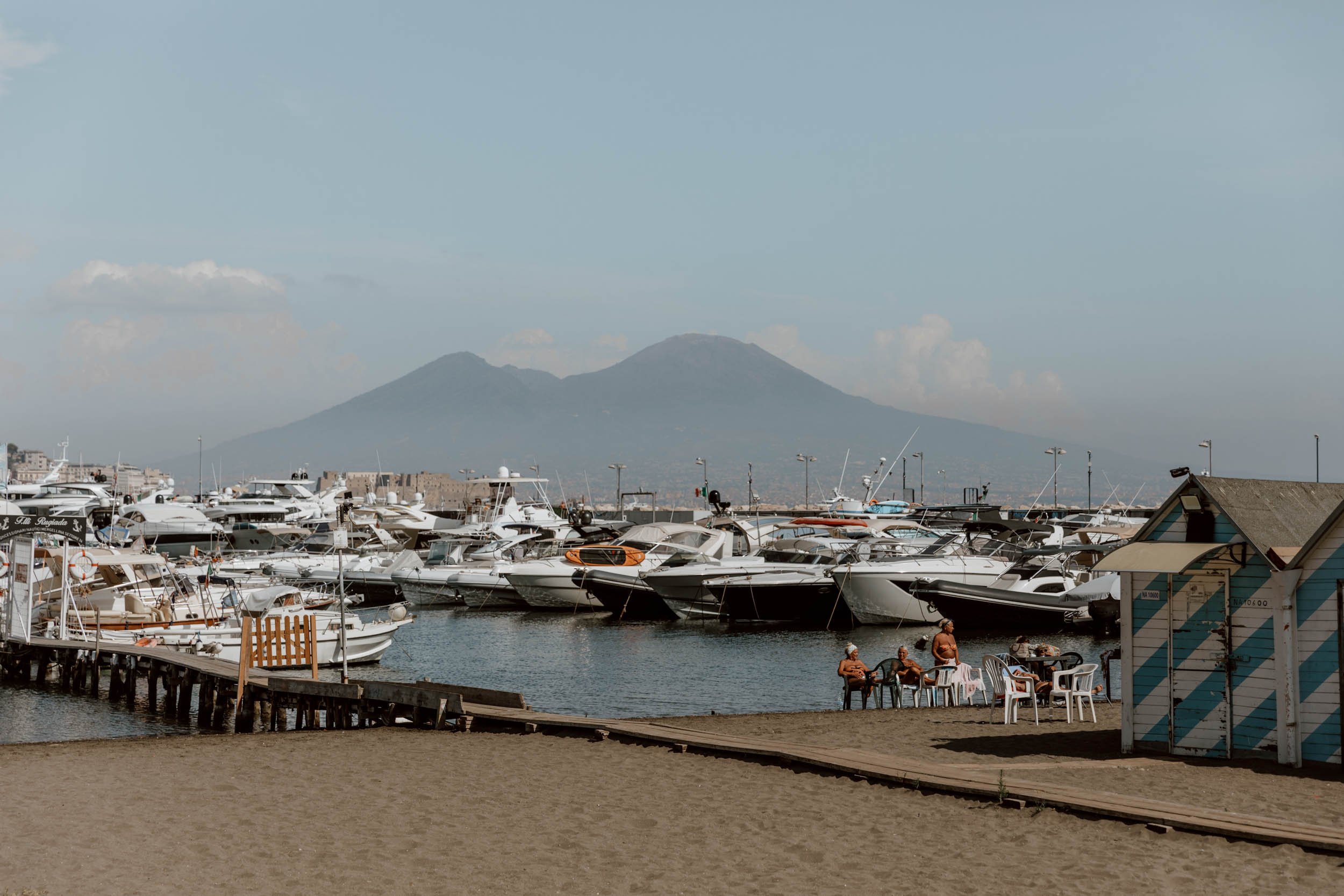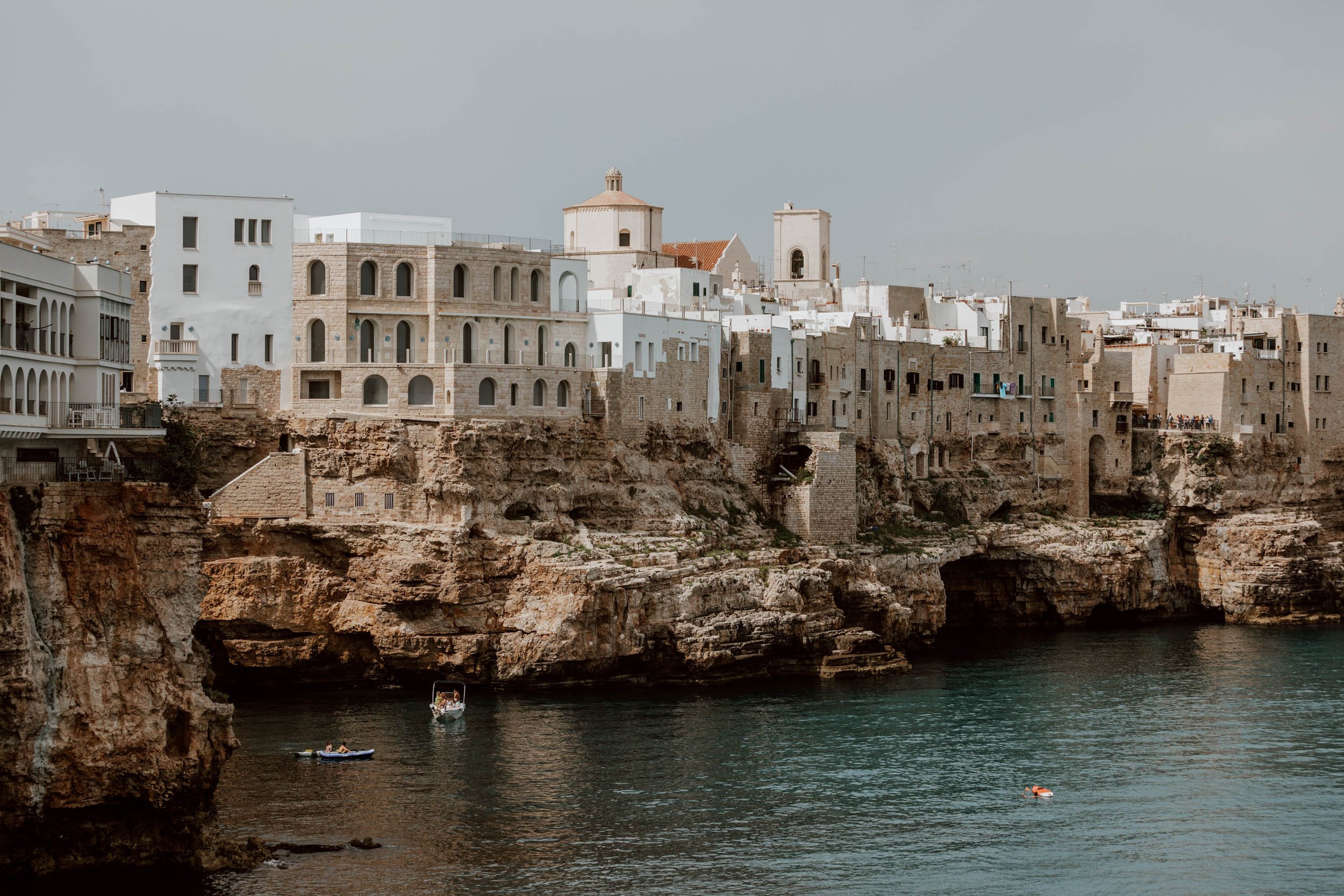Planning your trip to Siena, Italy? Whether you’re visiting on a day trip or wanting a longer sojourn in this medieval masterpiece, our guide to the beautiful Tuscan city has got you covered!
Updated April 2024
The swallows start to sing early in Siena.
Emerging at first light from the crevices within ancient stone and terracotta, they dip and weave between the rooftops that cluster up the three hills upon which the Tuscan city was crafted.
A powerhouse to rival the great cities of Europe before the Black Plague’s kiss of death in the 14th century, Siena is home to a wealth of medieval history, art, and culture; for many, it’s the embodiment of a medieval city. Composed of copper-red brick, soft-pink marble, Gothic-grey cobbles and icons draped in gold, it winds its way up on a pilgrimage to the gorgeous crescendo of its Humbug-striped Duomo - a Cathedral to rival any in Italy for beauty and intricate craft.
That this glorious Sienese skyline has changed so little in the last 600 years or so is remarkable but, come summertime, it serves merely as the backdrop for the song and dance of a thousand small birds.
A popular day trip from it longtime rival - nearby Florence - Tuscany’s compact ‘second city’ is certainly more than deserving of a few slow nights on its own merits, or to use as a convenient base from which to explore the surrounding wine region.
After our own stay in Siena, we wanted to share our favourite experiences and places to help you curate your own visit. From the secret viewpoints to seek out and art in the depths of the city’s foundations, to sunsets at a hipster hangout beyond the walls, witnessing a world-famous horse race, a local-led cooking class, and climbing one of the tallest towers in Italy, these are the unmissable moments to savour.
This is 13 Wonderful Things To Do in Siena, Italy.
p.s. for more historical context, planning tips, transport connections, and common mistakes to avoid, we recommend you also read the companion post to our Siena guide: 7 Things To Know Before You Visit Siena (published soon).
The Siena Essentials
See / A treasure trove of medieval art and architecture
Must / Home to one of Italy’s most beautiful Cathedrals, buy a skip-the-line-ticket here.
Alt / Or buy a combination OPA SI pass which cover entrance to all of Cathedral Complex
Eat / Delicious pasta at Ristorante All'Orto de' Pecci
Walk / From gate to gate, and along cobblestone streets (consider walking tour to cover more)
Visit / At least one museum; our absolute favourite was Santa Maria della Scala
Vistas / Several unmissable viewpoints - seek them all out!
Horse / Consider timing your visit with the Palio di Siena
Stay / Splurge at Grand Hotel Continental or keep it simple at B&B Il Corso. Lots of Airbnbs, including this lovely option.
Day / Siena is a popular day trip from Florence (easy on public transport but possible with a tour too)
The Layout of Siena
Before getting started, it's important for every visitor to get a little context on the unique layout and topography of Siena.
Its only train station is situated about 2km outside the historic centre (Google Maps), and on a level far below it, so walking is usually not the best option for every one. There are four main ways to travel between the two:
The escalators in Galleria PortaSiena (here on Google Maps), the shopping centre opposite the train station. They take five minutes to get you up to the exit by Porta Camollia (maps), which is a 15-minute walk from Siena’s main square in the historical centre. Ideal for day trippers, but Porta Camollia may be on the wrong side for your hotel or Airbnb.
Hop on one of the regular local buses from the station up to Piazza del Sale or Piazza Gramsci, taking 5-10 minutes.
Grab a taxi from the rank outside the station (maps) for less than €10. Taxis won't be able to access every single street or hotel entrance within the old town walls, so sometimes a little bit of wheeling along the streets is still necessary, but this is best if you have a lot of luggage and accommodation booked. Queues are common though, so don’t dally too long once you’ve disembarked from the train, or consider sharing with others.
Walk to the historical centre in about 25 minutes. If you don't have much luggage to wheel or carry, then the walk is very do-able but it's largely along a busy road and then 'up'. We absolutely do not recommend attempting it if you have lots, are particularly unfit, or arrive in the peak summer heat. There are some steep parts before and after the city walls, and Siena isn't the easiest to navigate with wheeled luggage!
If you're arriving on a day trip, then it's probably best to take a taxi at least one-way so that you don't waste nearly an hour of your time in the city walking to/from the train station.
For those of you with a rental car, you will have to park in several paid parking lots outside or just within the historic walls and gates, or by the train station, due to the ubiquity of Italy's infamous ZTL.
In terms of getting around the historical centre of Siena, you’ll be covering all of it on foot.
We've shared more advice on the above, including convenient parking spots, plus more essential bits of advice and travel tips to help you travel better in 7 Travel Tips Before You Visit Siena (published soon).
Our Favourite Thing to Do in Siena, Italy
Gasp At The Duomo di Siena
We visited Florence the summer before Siena, and genuniely thought its gigantic Cathedral topped by Bruneschelli's unfathomable dome was the most fantastic building we'd seen in person.
And then we stood before the Duomo di Siena at dawn.
With its alternating stripes of white and deep-green serpentinite marble, which seems black at first sight until painted by a shaft of light, there are clear stylistic and structural similarities between the two buildings (though Siena's smaller was completed first in 1264).
However, Siena Cathedral's three-door facade, adorned with soft pink marble interspersed with intricate carvings, statues of saints, and three golden scenes within each of its triangular tops is a mesmeric feast for the eyes to trump almost anything Florence’s has.
And it's not even the star attraction.
Within, the enormous floor is covered in a marble mosaic masterpiece. It's really difficult to convey how impressive this is - and the scale of it - but the Cathedral of Siena's floor is what makes a visit here distinct from Italy's many, many other beautiful religious buidlings.
The floor’s creation spans across the 14th and 19th centuries, with Sienese artists and a single Umbrian using the graffito technique of intense scratching in the marble to create complex, detailed scenes of ancient Greek prophecies, Biblical scenes, Tuscan symbolism, heroes, villains, and battles (logophiles will be happy to learn that the English 'graffiti' does indeed stem from the Italian root).
There are 56 inlay panels in total, with the dark /light contrasts, pop of yellow broccatello marble, and varying geometric patterns weaving a complex stone tapestry like no other.
You can see large sections of the floor throughout the year but, unsurprisingly, the annual uncovering of the marble mosaic brings many, many more people to Siena. Usually taking place from mid-August to mid-September (dates change each year, but it usually includes a decent chunk of September), visits around the period of the uncovered Duomo floor will mean longer queues and bigger crowds than usual.
Whenever you step into Siena Cathedral, it's therefore important not to rush: a holy building first and foremost with enough priceless, unique art to fill several galleries over, it is an intensely beautiful, ornate work of art in its own right, both inside and out.
There is no greater testament to Siena's historic power, wealth, art, and ambition.
Where + When | It feels like a pilgrimage whenever one arrives at the Piazza del Duomo as it's set on a hill and all of Siena's clustered medieval streets slope toward it. You can reach the square from several directions, but we recommend your first glimpse of the 13th-century Duomo is on the approach from the Via del Capitano sidestreet (here on Google Maps).
Siena Cathedral is open Monday to Saturday from 10am-7pm (1st April to 31st October) and 10.30am-5.30pm (1st November-31st March). Opening times will be affected by religious services, events, and public holidays i.e. on Sundays, it is only open to non-worshippers from 1.30pm-6pm.
To appreciate the facade and interor without the crowds and queues, we recommend arriving early.
Note that the floor is sometimes also uncovered in July for a few days.
Tickets | Prices depend upon what time of year you visit Siena: 27th June to 31st July, and 18th August to 16th October entry is €8 for adults, the rest of the year it is €5 per adult. This price includes entry to the absolutely beautiful little Piccolomini Library inside the Cathedral.
Various concessions are also available.
You can turn up and buy Cathedral tickets on the day in person, but this will always mean a wait in the 'normal' line; in summer, this can last as long as an hour. Instead, it's best to buy this 'skip-the-line' ticket online in advance.
This highly-rated 2-hour walking tour also includes fast-track access.
The Cathedral of Siena is also part of the OPA SI Pass, the official combination ticket for six attractions within the 'Siena Cathedral Complex'. We bought this before we visited as it gives 'skip-the-line' access too, in addition to exclusive entry to two other parts of the Cathedral (the Baptistery and Crypt) and one of our favourites viewpoints of Siena.
You can buy the OPA Si Pass here, and we share more in-depth information on what it includes and the 'Siena Cathedral Complex' in this short explainer post to the OPA Si Pass in Siena.
Travel Tip // Please dress and act accordingly in this holy building. It's recommended for women to cover their shoulders and chest, and everyone should remove their hats on entry. Please also give any worshippers the necessary space and silence.
Climb Torre del Mangia
The fourth tallest tower in Italy, named after a chap who frittered away all his wages on good food, the red-brick Torre del Mangia rises from the largest square in Siena and dominates the skyline.
Works started in 1338, and the tower was built in just a decade to the designs of two architect brothers (Muccio and Francesco Di Rinaldo). Part of the Palazzo Publico town hall, unlike several of Italy's other famous medieval towers, it was not built at the behest of a peacocking powerful family; instead, it was a symbol of a medieval Siena's forward-thinking politics.
Commissioned by the state, it was designed with the distinct aim of underscoring the balance of power between government and church, and built to reach the exact same height as the Duomo's striped belltower up on the hill. For 14th century Italy, this was truly radical, and the architectural feat of this slender structure was also quite remarkable for the age.
Today, the imperious Torre del Mangia is as much a symbol of the city as its famous annual horserace and the Duomo, and visitors are able to climb its 400+ steps to access stellar panoramic views of Siena and the Tuscan countryside beyond.
It does however require a bit of planning and a bit of perspiration to reach them…
Tickets | Entrance to the tower only permitted in accompanied small groups at specific time slots.
You are only able to purchase tickets for the Torre del Mangia in person at the main ticket office in the Palazzo Publico; there is no option to reserve or buy a ticket in advance online, and no option to book a time slot.
A standalone adult ticket costs €10, but you can also include entrance to Torre del Mangia in the CIVITAS SENENSIUM combination ticket. We have shared all the necessary information to help you plan your visit, save money, and avoid the queues in this dedicated short guide to climbing the Torre del Mangia.
Where + When | From 1st March to 31st October, opening hours are Monday-Sunday, 10am-7pm, with last entry to the tower at 6.15pm. Note that the ticket office is shut between 1.45-2.30pm, and closes at 6.15pm.
Outside of the main season, from 1st November - 28th February, the ticket office is open from 10am-1pm, then 1.45-3.15pm (with last climbing slot for the tower also at 3.15pm).
People-Watch in Piazza del Campo
If Piazza del Duomo is the cultural soul of Siena, then Piazza del Campo is the city's beating social heart.
Known simply as 'Il Campo' by locals, Siena's largest public square was founded at the point where three hills met; primarily used for markets, fairs, and festival, the large open space of 'the field' was at a lower level than the growing urban centres of early Siena.
Its transformation into the civic seat of power and influence was due to the Consiglio dei Nove (Council of Nine), who governed the city during its golden period (1285-1355). They selected and reconstituted the Piazza del Campo, commissioning the Palazzo Publico (town hall) and paving over the mud to create one of the most notable, revered medieval squares in Italy. The division of the centre into nine sections from a central drainage point - best seen from Torre del Mangia - was designed to pay tribute to the Consiglio.
However, controversial opinion coming up here, it's one of our least favourite piazza in Italy.
The concave upturned clamshell shape, the cavernous void in the middle, its gentle slope and the sheer size of it just meant it lacked a certain something - a little too hollow, austere, and empty for us.
Yet, alongside its longevity and political importance, the distinctive layout, Gothic architecture, and shape of Piazza del Campo are the main reasons for its fame in Europe - so perhaps you will have a different perspective to us.
Nevertheless, as the site of the Torre del Mangia, the Fonte Gaia, and the Palazzo Publico (the town hall which is home to the slightly underwhelming Museo Civico), a large collection of restaurants lining the perimeter, and eleven streets emanating from it, you'll undoubtedly pass through or hang out here several times as you explore Siena. And most of you will be impressed (the uniformity of the red-brick buildings on the permiter, built according to strict government guidelines drafted in 1297, is also photogenic).
It's probably the most popular place for tourists to dine, but note that coffee, food, or an aperitivo enjoyed here will usually attract quite a chunky coperto (if you don't know what that is, we highly recommend reading this short explainer article before you visit Italy in order to save mone, confusion, and embarrassment!)
There is also a good reason why Piazza del Campo’s size, enough to hold the whole population of Siena at one point in time, is so valued....
The Palio di Siena
Twice a year, Piazza del Campo is transformed into a horseracing track and the Sienese reignite neighbourhood rivalries with colourful banners and flags bearing snails, eagles, owls, giraffes, dragons, and porcupines.
The Palio di Siena is an ancient horserace, with the 10 runners and riders representing the 17 historic districts which make up the city. Horses do a lightning quick three laps, with the bareback jockeys dressed in some quite quirky traditional costumes, and it's usually done and dusted in under 90 seconds.
The Palio is an incredibly important event for locals, held every 2nd July and 16th August,
but the actual race takes place on the fourth day of a series of festivities, parades, and pageants. Attendance figures for race day itself as difficult to track down, but from the pictures we've seen, a good few thousand are cramped inside Il Campo to watch it.
This New York Times article is a good read about attending!
Plan | A unique, crazy travel experience, travellers are able to attend the Palio and watch free of charge from within the Piazza del Campo, but you really need to get to the square as early as you can in order to secure a decent position. A ticket is required to secure a better in spot in the private stands, balconies, and windows overlooking the square, but they're very pricey and the process to get them a little opaque unless you buy a package from a tour company (let us know in the comments if you do or find out an alternative!)
Eat At Ristorante All'Orto de' Pecci
Ok, time for a break from history and some of the most popular things to do in Siena.
It's important to appreciate that Siena does get very, very busy in summer. Although it isn't quite at the levels of Florence or Venice, the Piazza del Duomo and the narrow streets of the small centro storico can become unpleasantly crowded around lunchtime, with the conglomeration of day trips and tours alongside locals going about their business.
Throw in the fact that finding a good, authentic place to eat in certain central streets can be a little challenging due to many catering to principally to tourists (there are some good ones though!), escaping to a lesser known part of Siena for lunch kills two birds with one stone.
As there’s also a resident donkey, you're on to a surefire winner.
Ristorante All'Orto de' Pecci is only a 10-minute walk from the centre, but feels like a different world. Outside the city walls in a low, green field at the end of a dusty road, you could be forgiven thinking that you've stumbled upon a little gem in the countryside.
Run by a really friendly bunch of guys, they serve up simple, seasonal dishes with produce from their garden, as well as pizzas. Prices are affordable, the outdoors setting is a lovely change of scenery, and lunch here provides the ideal chance to relax with a glass of wine and good, honest food. We recommend a plate with fresh pici, the chubbier cousin of spaghetti and the traditional Tuscan pasta type.
There's a community garden here too, and sometimes a sculpture or two, as well as the owner's curious goats, chickens, and friendly donkey at the far end (likes fuss but, from personal experience, also enjoys clamping down on errant fingers).
Where | Best reached on foot, you can arrive via a few different routes, depending on where you’re setting off from in the centre. The walk back up the slight incline, if the meal goes as intended, isn't as enjoyable as the walk down! Find it here on Google Maps.
When | Open for lunch from 12.30-2.30pm, dinners from 7.30-10.30pm. Closed Mondays.
We've shared more personal recommendations on where to drink + eat in Siena later in this guide. If you’re in the city for a few days, then joining a local-led cooking class like this one is a great idea too.
Get Lost in The Streets & Gates
The whole of Siena’s historic centre is designated as a UNESCO World Heritage Site, prized for its “embodiment of a medieval city”; in a country like Italy, where so many towns and cities are works of art rather than simply drab urban spaces, it’s no small thing to be so coveted.
Driven by rivalries with Florence and Pisa, Siena reached the peak of its powers around the 13th and early 14th centuries, and was undoubtedly one of the great cities of Europe during the medieval period. That the historic centre remains so true to this epoch’s Gothic architecture and style is partly due to the disproportionately devastating impact of the plague on the city.
The Black Death, a pandemic that spread across Europe, hit Siena in 1348 and killed around 30-50% of its population. Other cities, like Florence and Milan, managed a renaissance, but Siena would never recover; fated to be trapped in its gilded cage atop the three hills, it lost prominence, people, and power to northern rivals that would expand to become the centres of thought and wealth in Italy’s new period.
And so, getting lost in these streets, is a privileged reminder to never take a good thing for granted.
Here at Along Dusty Roads, we like to give you all the detail and planning tips when you think we need it, but also like to encourage you to meander without a plan or a deadline: it’s a core part of our slow travel philosophy.
So, in between the various best things to do in Siena, spend a few hours each day following your nose or gut down a side street, turning left instead of right, putting away the blue dot of the Google Maps, look up, and simply get lost within the streets of the historical centre.
As well as a way to get away from the most crowded streets, it also opens up the chance for a bit of serendipity, perhaps leading to the little restaurant, bar, or interaction which makes your whole trip that bit better.
If you would like to add a little bit more structure to it, you can do what we did and pass through all of the twelve remaining porta (gates) that criss-cross and surround the centro storico. Or, try to tick off the seventeen neighbourhoods - the contrade - which are represented in the Palio race and are a relic of Siena’s medieval divisions. Each contrada is represented by a distinctive symbol – a unicorn for Leocorno, a snail for Chiocciola, a little owl for Civetta etc - and there is quite a lot of importance still attached to the neighbourhood rivalries and ceremonies (the Wikipedia entry is worth a read on the history and modern-day relevance of the contrade).
You will spot the specific symbols of each contrada you’re in on bars, plaques, flags, statues and banners as you wander around, with everything ramping up and adorning more walls and windows come Palio time, so can make it a bit of treasure hunt to shape your wanderings.
As our lovely little Airbnb was in Giraffa, we’re team giraffe all the way.
Travel Tip // If you’re visiting on a quick day trip, consider joining a walking tour to help you cover more.
GO DEEP IN Santa Maria della Scala
There is so much art, history, and culture to contemplate when travelling in Italy, that's it's important to know that you can only appreciate so many masterpieces in a single day. 'Stendhal syndrome' may have been coined from experiences of ecstasy when face-to-face with Florence's art, but every Italian city possesses an indescribable level of objects, artworks, and antiques which can set your mind on fire.
And Siena, this powerhouse of the 13th century with its own distinctive art movement stemming from the period, has a real treasure trove.
The flipside for the traveller is that, trying to see too much of it in a single day or short space of time, can create a state of passive ennui, where the next great work you see in a gallery becomes humdrum. The 'too much of a beautiful thing' philosophy can also extend to churches and cathedrals and (whisper it) some of Italy's best foods.
And so, we won't direct you to each and every single gallery or museum in Siena. We had four days in the city, so could slowly savour all of the main ones, but if you're only here for a day trip or couple of nights, you shouldn't overstuff your schedule and end up not appreciating what you do have time to visit.
Whilst the Museo dell'Opera houses golden masterpieces from the Sienese school, the Museo Civico has several famous pieces, and the Pinacoteca Nazionale is the best place to understand the distinctiveness of the art form, we would prioritise Santa Maria della Scala above all others.
Set within the large former building of one of Europe's first hospitals, it's been renovated into a cultural centre, museum, gallery, and vast subterranean archaeological dig site. It's quite difficult to convey exactly what you can see and learn from Santa Maria della Scala, as it lacks that single identity of most museums and galleries, whilst the building it's in is so massive and set over various levels that you may not cover or uncover as much as the next person.
However, in addition to the frescoes, Renaissance paintings, hidden tunnels and histroric foundations, intimate chapels, casts from the Fonte Gaia restoration, make sure to take a moment for yourself in the very special crypt of the chapter of monks in the depths.
Where + When | You can find the main entrance and ticket office in the corner of the Piazza del Duomo (maps) - the hospital was on the Via Francigena pilgrimage route to Roma, so that it offer shelter and care for pilgrims and the poor.
From 15th March -15th October, open from 10am-7pm every day except Thursday (10am-10pm).
From 16th October - 14th March, it's open 10am-5pm (7pm on weekends) but closed on Tuesdays.
We'd suggest setting aside two hours for Santa Maria della Scala, but the curious or scholars amongst you could spend a lot more; if you're here during a rainy day in Siena, this is also the ideal place to enjoy until it passes.
Tickets | You can purchase a standalone ticket for the Santa Maria della Scala for €9 at the ticket desk, or €8 if you buy it in advance online. For reduced entries, including it's €7, whist children under 11 get free entires.
However, you can also include Santa Maria della Scala in several of Siena's complicated 'cumulative' combination tickets (distinct from the OPA SI Pass). We've explained the options + money-saving potential in this post: 7 Things To Know Before You Visit Siena.
For latest opening hours, prices, and to buy tickets in advance, visit the official website.
GO Up The Facciatone Viewpoint
As mentioned, there are many, many fantastic viewpoints in Siena - both free and paid.
One of our favourites, where you get up close and personal with the marble stripes of the Duomo, is from roof of the unfinished new cathedral next door to the one we discussed in such glowing terms earlier.
That's not a typo.
Perhaps the greatest testament to the confidence and ambition of medieval Siena - its desire to be great, or at least one step ahead of Florence - is the fact that there were concrete (marble actually) plans in the early 14th century to extend the existing Cathedral out to such an extent, so that what you see today would have only been a transept (one of the two parts forming the arms and shape of the cross, common in church architecture).
Construction work seemed cursed from the start, with various collapses, personnel changes, and mishaps. It was the arrival of the 1348 Black Death though which killed the project for good, with a decimated, broke Siena unable or unwilling to fund such an expensive build.
Our hunch is that, faced with disappointment of having a relatively small Cathedral (especially in comparison to their Florentine neighbours, Siena decided to put everything into wiping the floor with everyone else with the creation of its, er, marble floor.
The most prominent of ruins which remain is know as Il Facciatione (roughly translates as 'the big facade'), and its from this curious unfinished section of the 'new' catherdral where you find a very special, up-close-and-personal, eye-level view of the 'old' Duomo.
The Cathedral Museum (Museo dell'Opera) is within the same building and included on the OPA Si Pass. We recommend you make your way to the viewpoint first, and then take around 45 minutes afterward to enjoy the various sculpture, icons, art works, and stunning restored stained glass window of Duccio di Buoninsegna, the father of the Sienese school of painting. As we mentioned, his most famous work - the Maestà altarpiece - is also found here.
Where + When | You can find the entrance Panorama dal Facciatone & Museo dell'Opera within the Piazza del Duomo, here on Google Maps. Opening hours change depending on time of year: 1st April to 31st October | 10 am – 7pm 1st November to 31st March | 10:30am – 5:30pm.
Tickets | Part of the 'Siena Cathedral Complex', entry to the Facciatone Viewpoint is exclusively for those who have bought the OPA Si Pass.
You can buy the pass before you visit here (including free cancellation unto 24 hours before you visit), but for more details on what it includes, benefits, and money-saving potential, read this dedicated post: A Quick Guide To The OPA Si Pass in Siena
Travel Better // We did our research before visiting, and it was clear the long queues were an issue for people arriving later in the day (up to an hour) due to the limited capacity on the viewpoint. There's the potential for two queues at the busiest moments - with one outside entrance and another inside at the access point for the narrow stairs to the viewpoint.
So, we went there first thing in the morning, didn't have to wait, and enjoyed 30 minutes up there practically on our own for most of it.
That experience may have been the exception, and impossible if you're visiting Siena on a day trip and trying to do lots, but for those of you staying a night or two in the city, we recommend doing what we did (this also allows you to savour the Duomo before the doors open and anyone else arrives in the square).
It's a very narrow viewing point exposed to the elements atop Il Facciatone - be careful and considerate of others. In busy times, the attendant may ask you to go down so that others can get up.
Find The (Other) Best Viewpoints of Siena
With a city this beautiful, and with such a unique topography, you really do want to admire her from every angle.
As should be clear by now, there are dozens of breathtaking viewpoints of - and from within - Siena, and we made a point when exploring every nook and cranny of Siena’s medieval streets, gateways and walls to seek out the most intoxicating beyond the better-known, ticketed ones.
All of the below personal favourites are free to visit and, will, quite literally, give you a new perspective on Siena and its most famous landmarks, as well as bring you to some lesser-known pockets of the city.
The Monastery of St. Augustine | This is our little secret, but we're happy to share it with you - you're looking for the viewpoint from the small park next door to the church. Find it here on Google Maps.
Vista Siena | Stunning view from the walls of the historic centre rising to the cathedral - find it here on Google Maps.
Vista Panoramica | There's a little cafe terrace you can sit and enjoy this view from - find here on Google Maps.
Terrazza panoramica | Close to Piazza del Campo, this is the best viewpoint of Basilica Cateriniana San Domenico - find it here on Google Maps.
Museo Civico | If you’ve paid to enter the Torre del Mangia, be sure to pop into the Museo Civico which is included in your entry fee. The museum itself didn’t get us too excited, but the panoramic terrace is definitely worth heading inside for.
The Porta | We stood and watched the birds fly in and out of Port Sant’Agata, and it’s a beautiful sight.
Eat + Drink Your Heart Out
Now, you're in Italy, so eating and drinking is as much of a meaningful activity as anything else on our list of the best things to do in Siena! As we mentioned, it can be a bit of challenge at lunchtime to find a restaurant in the centre which is offering up good-quality, authentic regional food, and we found this to be the most frustrating part of our time in Siena. They absolutely exist, but there are unfortunately quite a few tourist-focussed menus and restaurants, and sorting the wheat from the chaff can take a bit of time.
Also, given the crowds in summer, securing a table outside can also involve a bit of a wait unless you're 1. eating in Piazza del Campo or 2. turn up early (understandably, many want to optimise covers, so don't want to give a remaining table of four to a couple).
However, in addition to Ristorante All'Orto de' Pecci, we can recommend the following:
Enoteca I Terzi (maps) is a slightly fancier option, but popular with locals and in a slightly off-the-main-drag location. We had a lovely lunch there on the small collection of tables outside, but the panelled interior would provide an atmospheric setting too.
Pasticceria Nannini Conca D'Oro (maps) is an obligatory stop for a fresh cornetto and cappucino in the morning, and provides a good opportunity to try several sweet Sienese treats like ricciarelli, cavalucci, or cantucci. La Bottega del Caffè (maps) round the corner is another good choice.
Vicolo del Campaccio, by the Basilica, has a couple of decent options, and the terraces all offer up an excellent views. Just round the corner, the narrow, steep street of Costa Sant'Antonio (maps) becomes a cool little spot in the late afternoon and early evening for a drink or dinner. For something a little different, check out Quarto Bistrot (maps).
Far from the main drag, Tre Cristi Enoteca Ristorante (maps) was right by our Airbnb and a little gem. Very authentic regional dishes, with tasting menus and seafood specialities, this is a place to come for a memorable meal together, but options for vegetarians are unfortunately a little lacking. A good alternative for something less formal round the corner, is pizza at Il Cavaliere Errante Siena (maps), which shares the square with the old boys playing cards outside the Giraffe neighbourhood social club and Santa Maria in Provenzano church.
We only stumbled upon Ristorante Mugolone (maps) on our final day and weren't able to eat there. However, this looked like an achieveably fancy dining experience, and offered an excellent sounding vegetarian tasting menu - something that's difficult to find in Italy at an establishment like this. Opposite, there's the wonderful curios of Itinera, which offers a delightful collection of antique stamps, prints, and books.
If we still ate meat, then we'd have made a beeline for Osteria Il Grattacielo dal 1840 (maps). We came across this unique place under the arches, which looks like its plucked right out of a movie from the 30s, and thought it was a special discovery - but the reviews on Google make it clear that it's clearly no secret! They specialise in meat boards and sandwiches, and other very traditional regional plates that can change daily. Best if you speak some Italian.
On a similar vein, Al Boccon di Bòcco, da Alberto (maps) is a little hole-in-the-wall supermarket on a pretty little street by the Piazza del Duomo, and the friendly owner Alberto sells handmade, good value paninis at lunchtime. There's also a small seating area outside if you want a breather. There’s also the ridiculously photogenic (but no photos are permitted) Antica Pizzicheria al Palazzo della Chigiana - De Miccoli (maps) on the main drag for Tony Soprano level meat sandwiches on upturned wine barrels.
On the streets into and out of Piazza del Campo, you'll find a bunch of affordable options which have lovely views, but reviews are mixed and we couldn't get a table at the ones we were recommended by followers.
Ristorante 4 Cantoni (maps) is in a pleasant central piazzetta for an Aperol (just watch the final bill as we definitely got diddled once), and it's a short walk from the most popular place for gelato - La Vecchia Latteria (maps). We recommend the pistachio!
If you have a lovely dining experience in Siena, then do share your reccos in the comments below! Also, remember the coperto in Italy is a big thing, wherever you dine out.
Travel Tip
We love to do a cooking class wherever we travel, and have done several across Italy over the years. Aside from a full belly and fun experience, it’s an opportunity to learn and really get to know the importance of regional dishes and local, quality, lingredients in Italian food.
If you’d like to get more acquainted with Tuscan flavours and ingredients, there are several highly-rated small-group cooking classes in Siena:
One | Held in a local family’s home in Siena, you’ll learn how to make two pasta dishes from scratch, plus a tiramisu! Find out more here.
Two | A more formal setting, this class is led by a professional chef in central Siena and you get to prepare (then enjoy) a full four-course menu! Find out more here.
Three | A four-hour Tuscan masterclass by a professional chef on a little family farm just outside Siena, but including transport to/from the city meeting point. Find more info here.
Escape the Crowds For A Drink at Fortezza Medicea
As we mentioned, Siena is a popular place and this can sometimes dampen some of its shimmer, especially if you're based here for a few days.
On our third day, we wanted to escape the afternoon crowds, and ventured beyond the historical centre and through to 'new' Siena (which really just looks and feels a lot like of 'old' Italy!). Our destination was Fortezza Medicea, an old red-brick fort which has evolved into a park for dog-walkers, runners, yogis, and young couples. However, it was the outdoors seasonal Bar Fortezza which we were most excited about. Full of pretty young things enjoying Aperols with a good soundrtack and glorious sunset view of old Siena in the distance, it was exactly what we needed to find!
You can find Bar Fortezza here on Google Maps, and it often hosts live music and other events in summer. It was open until the late evening when we visited in summer, but we're not 100% certain on fixed hours due to the seasonal nature of the setting.
Alternative // The most important weekly market - La Lizza - takes place on the streets around Fortezza every Wednesday from 8am-1pm. There’s also an antiques market in Piazza del Mercato every third Sunday of the month (except August).
Travel Tip // It make sense to pair your walk there or on the way back (if not heading for sunset) with a stop by Basilica Cateriniana San Domenico. With a far more sober red-brick Gothic design than the show-steraling Elton John costume design of the Duomo, the imposing church is most well-known for containing the relic of St. Catherine's detached head, as well as several other masterpieces. It's free to enter, but forbidden to take photos inside.
The Basilica is open from 7.30am-6.30pm, and you can find a captivating account of its history and art on the official website. As ever, dress and act in accordance with the buildings spiritual significance.
Just outside the Basilica, you'll find another fantastic viewpoint back onto old Siena!
Learn About Wine
Tuscany is one of the most famous regions for wine in Italy, and punctuating your explorations of Siena with a glass or two is a very sensible daily habit (with an Aperol spritz or two later).
Chianti and Brunello di Montalcino are the most notable here, and restaurants will all have an abundant selection of local picks, but it’s the side streets wine bars and specialist shops dotted around the historic centre where you can really find the vintages and small-scale varieties you won't really find outside Italy; most offer tastings and small plates too.
A few of our favourites were Enoteca Emporio Mediterranean, Cantina In Piazza, Cantina del Brunello di Montalcino, and Trefilari Wine Bar, but do let us know in the comments you find a hidden gem!
Another option to consider is this Tuscan wine class, which takes places in the city centre.
However, if you’re spending a few nights here, then choosing to do a vineyard visit or tasting in the Tuscan hills is a really excellent idea for a Siena day trip. We’ve included several highly-rated small-group tours to consider:
Vine, Wine and Life | Held in an organic winery two kilometres from Siena, this 3-hour long educational wine and tasting tour takes you though the different stages of wine making, and teaches you how to really taste what’s in your glass. Includes a light lunch.
Brunello di Montalcino Wine-Tasting | This full-day, small group tour takes you to three wineries in the countryside to learn about and sample one of Italy’s top wines, Brunello di Montalcino. Also includes a Tuscan lunch.
Alternatively, this same tour can be booked on GetYourGuide.
Chianti and Castles Tour with Wine Tastings | Focusing on the Chianti region, this 5-hour tour ancient churches, medieval castles, and small villages before continuing along to two separate wineries for tastings and nibbles.
Or, for something a little different and if you know how to drive one, you can explore the Tuscan hills on a rented Vespa with a tour guide (there’s also a big lunch and wine tasting).
The Crypt & Baptistry of San Giovanni
These are the final two sites within the 'Siena Cathedral Complex', situated in the Piazza del Duomo, and should really be viewed as add-ons to make your Cathedral visit complete.
The interior of the Baptistry of San Giovanni is a remarkable feast of the Sienese school of art's distinctive approach to shape, figures, and colour. The Biblical scenes were all created by Lorenzo di Pietro, better known as ‘Vecchietta’, between 1447 and 1450, and they have remained resplendent through the centuries.
The star attraction, taking pride of place in the centre of the relatively small room, is the Baptismal Font. Crafted by several renowned sculptors of the age - including Jacopo della Quercia, Lorenzo Ghiberti and Donatello - there was unfortunately significant restoration work being undertaken when we visited, so much of it was covered!
It was renovation work on the Cathedral in 1999 which led to the discovery of a buried room beneath, where all the walls were adorned with preserved medieval Old and New Testament scenes. One of the most important archaeological finds in Siena's recent history, three years of careful excavations resulted in the 'Crypt', and a series of walkways allow visitors to admire the frescoes and fragments.
Where + When | The Battistero di San Giovanni (maps) and The Crypt (maps) are open 10am-7pm (1st April-31st October) or 10.30am-5.30pm (1st November-31st March).
The stairway linking the two is very photogenic, and there are couple of cafes in front of the beautiful facade of the Baptistery to enjoy a coffee break or breakfast + pastry after an early rise.
We think you don’t need more than an hour to enjoy them both.
Tickets | Entry is included on the OPA SI Pass and, as far as we're aware, you cannot buy a standalone ticket. You can purchase the OPA SI Pass here, or find out more about its benefits in this explainer post.
The Crypt is also the location of the main ticket collection office for the OPA SI Pass.
Travel Tip // We also did the Porta del Cielo experience in Siena, also known as the 'Gates of Heaven', but have very mixed views on it. The specialised tour is not included in the OPA SI Pass and takes small groups into the upper parts of the Cathedral, which gives a short tour on the construction and permits exclusive access to hidden sections, outdoors walkways, and perhaps the best vantage of the entire mosaic floor. However, it all felt far too rushed and inflexible, with our group given hardly any time to actually enjoy (let alone savour) the views, and less than15 seconds at the highlight of the experience - the balcony overlooking the Cathedral floor. Due to our ‘blink-and-miss-it’ experience, we don't recommend prioritising it given the range of other excellent things to do in Siena - and the option to do the comparatively excellent Bruneschelli Dome experience we did in Florence.
If you're interested though, you can add it to the OPA SI Pass on the official website, or buy it in person at the Crypt ticket office (1st March to 6th January).
Where to Stay in Siena
We have grand plans to create a separate ‘Where to Stay in Siena’ post but until we get around to that we wanted to include a selection of some excellent options in this guide - whether you’re looking for a gorgeous historic palazzo, a stylish apartment or just someone budget friendly to lay your head, we’ve got you covered!
Hotels & Guesthouses in Siena
Grand Hotel Continental | The only 5* hotel in Siena’s historic centre (less than five minutes from Piazza del Campo), this stunning 17th century palazzo is every bit as grand as the name would suggest. Rooms are a little smaller than one might expect, but the communal areas are stunning and hotel restaurant highly sought after. Find out more here.
Another similarly historic property to live out your ‘Grand Tour’ dreams is Residenza d'Epoca Palazzo Borghesi. Points for being a little more competitively priced than the above.
Palazzetto Rosso | With the majority of hotels in Siena being offering a more traditional aesthetic, this highly-ratel hotel provides an alternative for visitors who prefer a more modern-contemporary and artistic design - a really interesting place to stay! Find out more here.
B&B Il Corso | This sweet little guest house offers comfortable rooms in a neutral palette and with traditional features like wooden beams. It has literally hundreds and hundreds of excellent reviews, is really well priced and is excellently located in the heart of Siena. Find out more here.
Other cute, central located and super popular guest houses - which also represent good value for money - include Casacenti B&B, Al Mercato B&B and B&B La Coperta Ricamata.
Il Battistero | Located directly opposite Siena's Gothic baptistery and just 220 yards from Piazza del Campo, this stylish boutique accommodation offers five rooms and two suites, each decorated in a contemporary style but with stylish historical features. A real bonus is the on-site wine store and wine-tasting in the hotel’s ancient stone cellar! Find out more here.
Hotel Santa Caterina | This charming hotel, housed in an 18th century villa, is located just outside the city walls, a few steps from Porta Romana (one of Siena’s medieval entrances) meaning you have a true feel of being amongst the Tuscan hills but with the benefit of being just a 15 minute walk to the historic centre. It’s also ideal for those on a road trip as the hotel offers private parking. Find out more here.
Airbnbs in Siena
Siena is one of those place where the majority of properties to rent on Airbnb still belong to individual hosts, and where most reflect traditional Italian decor (from simple at the lower price point to elegant and beautiful at the higher).
There are of course a few beautifully decorated contemporary apartments, but these are significantly fewer in number than other cities we have written guides to. Likely won’t have a huge impact on your trip (especially if you have a larger budget) but something to bear in mind when picking the perfect place to stay in Siena for you!
Domus Nannini - Loggia Salimbeni | If you crave a true palazzo experience, and have a higher than average budget, consider this stunning three-bedroom apartment that occupies the entire second floor of a 1600’s palace and offers privileged views of Siena and its architectural wonders. Elegantly decorated and furnished throughout with countless beautiful period features. Absolutely stunning! Find out more here.
Casa WOW | Not only is this two-bedroom apartment really beautiful inside, decorated like a family home and filled with antiques, art and light, it benefits from a huge rooftop terrace offering panoramic views over Siena. It’s super high rating is not a surprise! Find out more here.
With a terrace sounds marvellous but the above is already taken, take a look at this penthouse instead.
La Casa di Emily | This is our top budget recommendation, costing less than £70 a night during the summer months. The top-floor flat is comfortable and cosy with an attic vibe, and is ideal for a couple. It also offers great views! Find out more here.
Historic House | This slightly quirky apartment won’t suit everyone, but if you appreciate interesting modern design with a nod to the mid-century aesthetic, emphasised by original period features like murals, high ceilings and wooden beams, you absolutely have to take a look! Super well located with excellent reviews. Find out more here.
Suite 19zero3 | This is such an excellent little Airbnb for couples. Located just behind Piazza del Campo, it’s located on the ground floor of a 13th century building (so bursting with original features), offers wonderful views and has hundreds of amazing reviews. The only downside is that the kitchen is tiny so not practical for long-term guests. Find out more here.
If you genuinely can’t abide traditional decor and prefer a more minimalist, contemporary look and feel, this property or this one may fit the bill!
Other properties that caught our eye include Casa Fusari, Diacceto19 Siena, Cinotti Palace, Charming Historic Apt (we especially like this one!), Palazzo Rinuccini Torre, Apartment Palazzo Casini Piccolomini and House on the Square "Campo".



